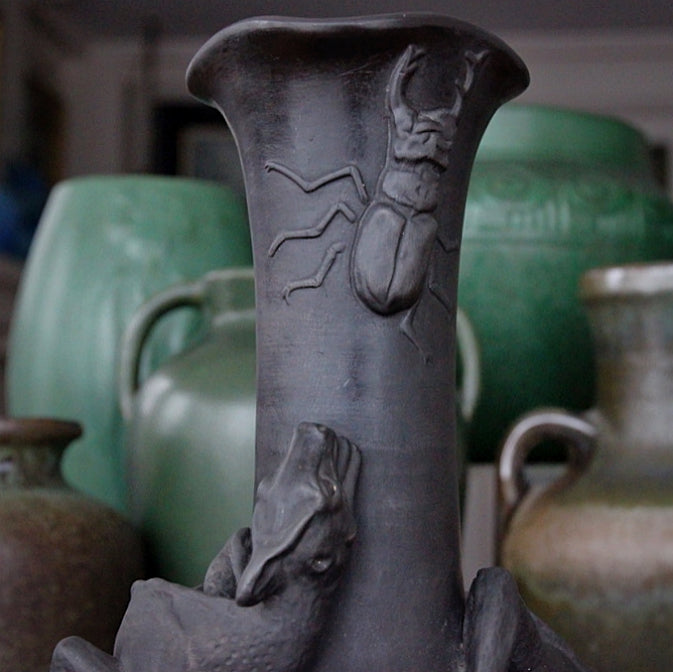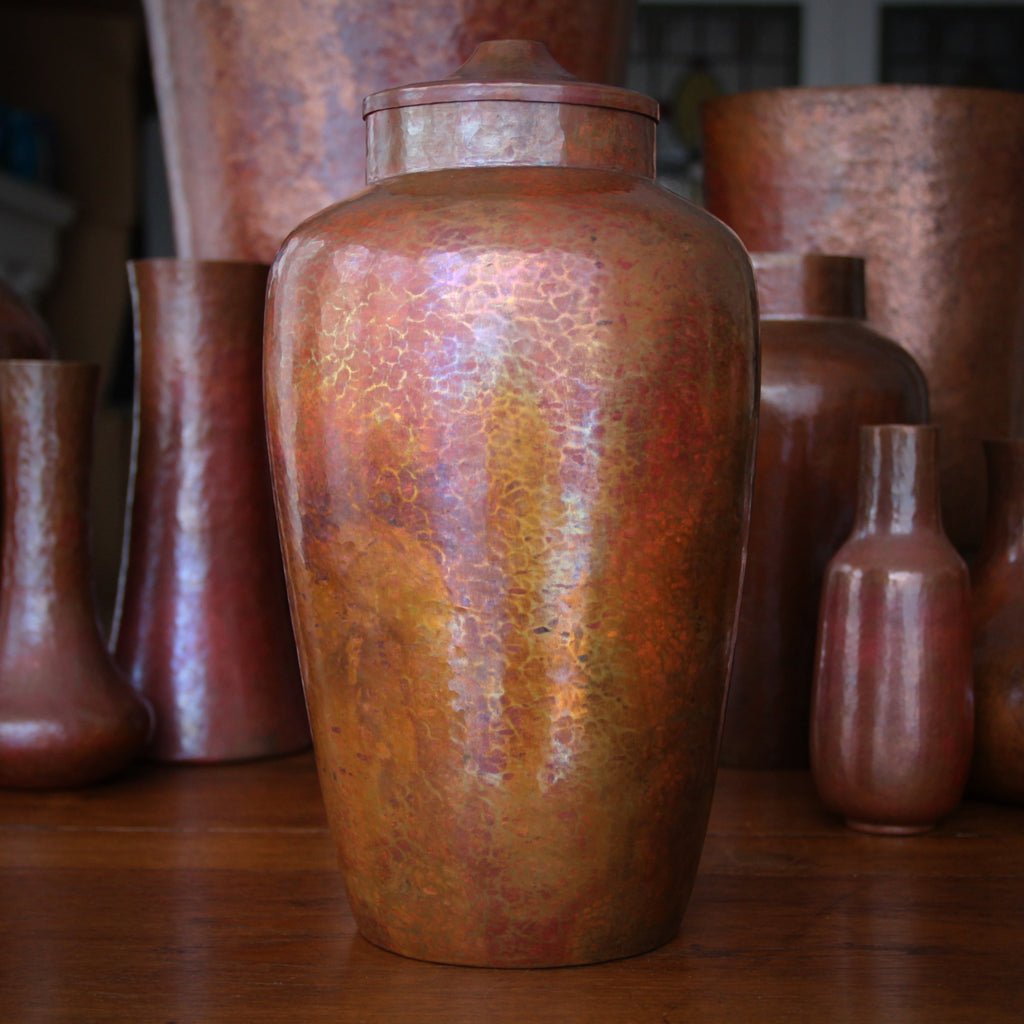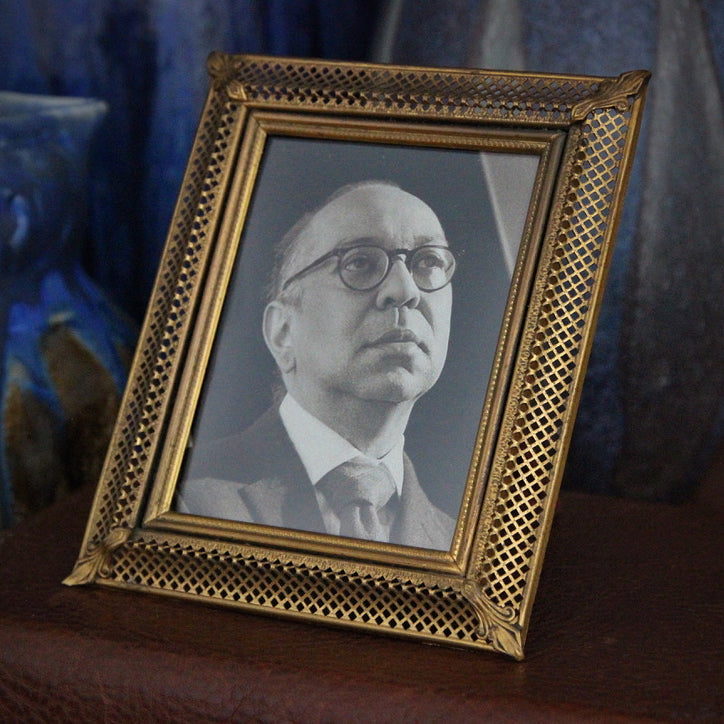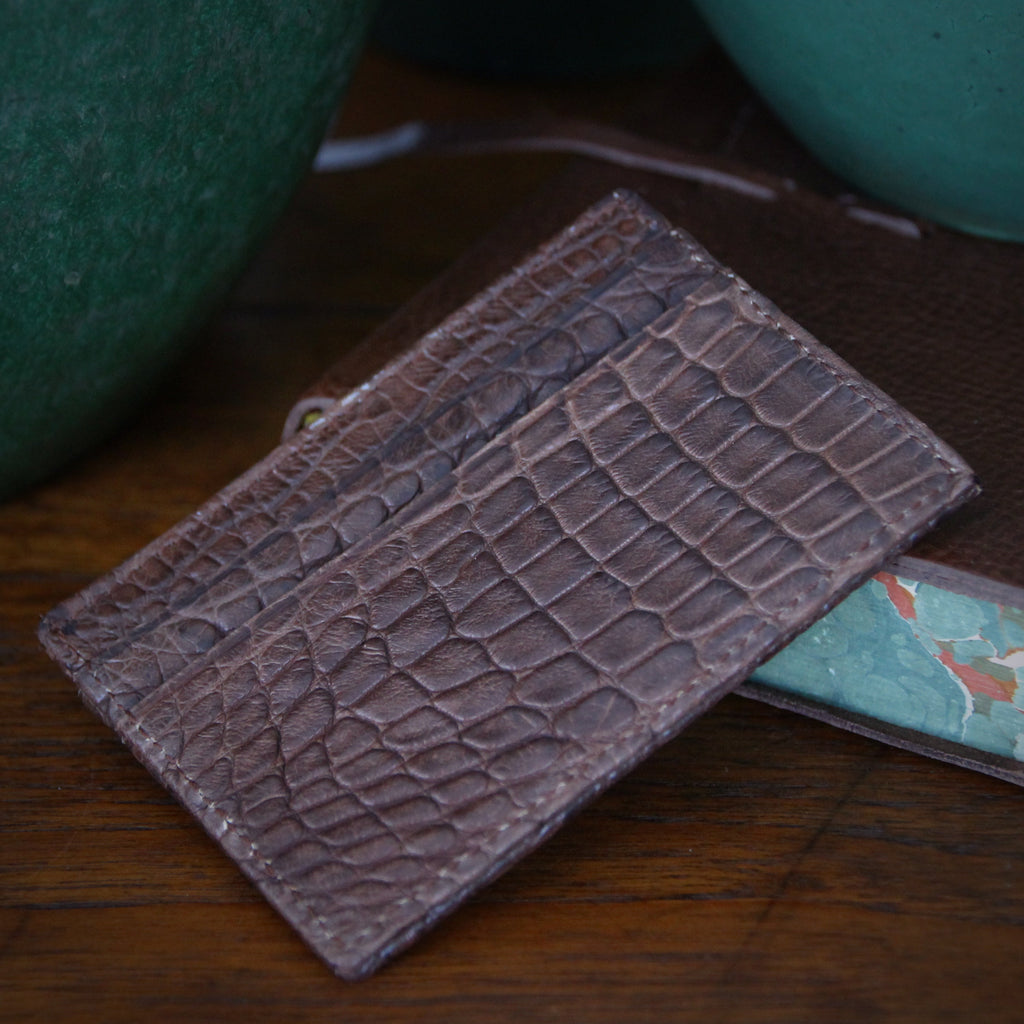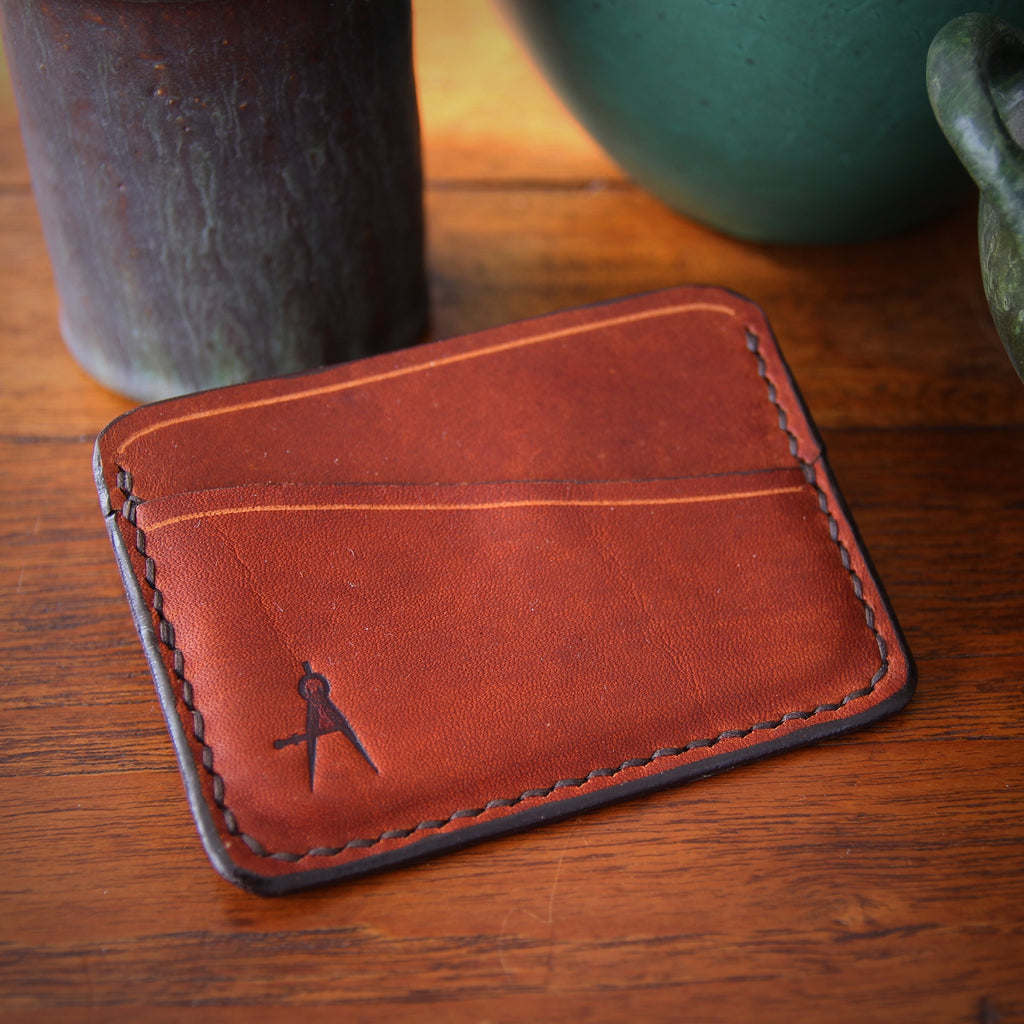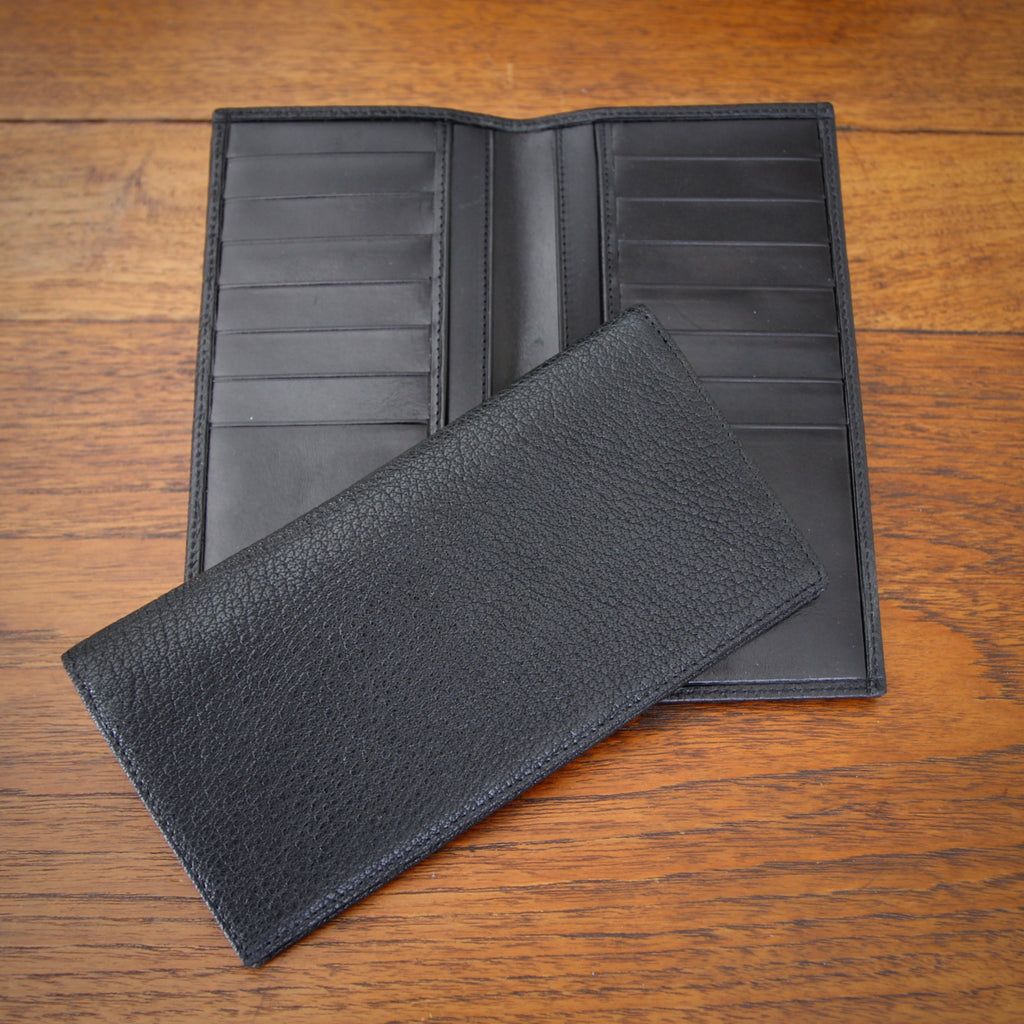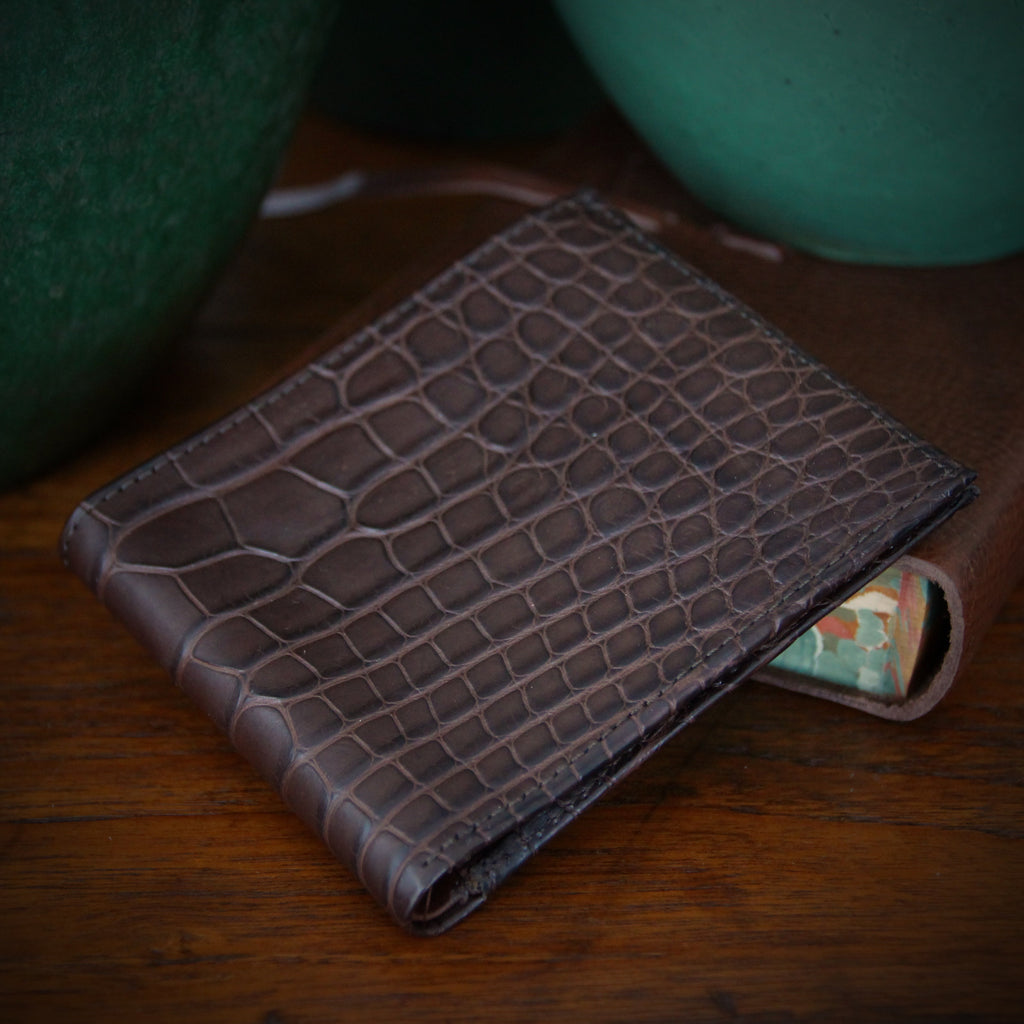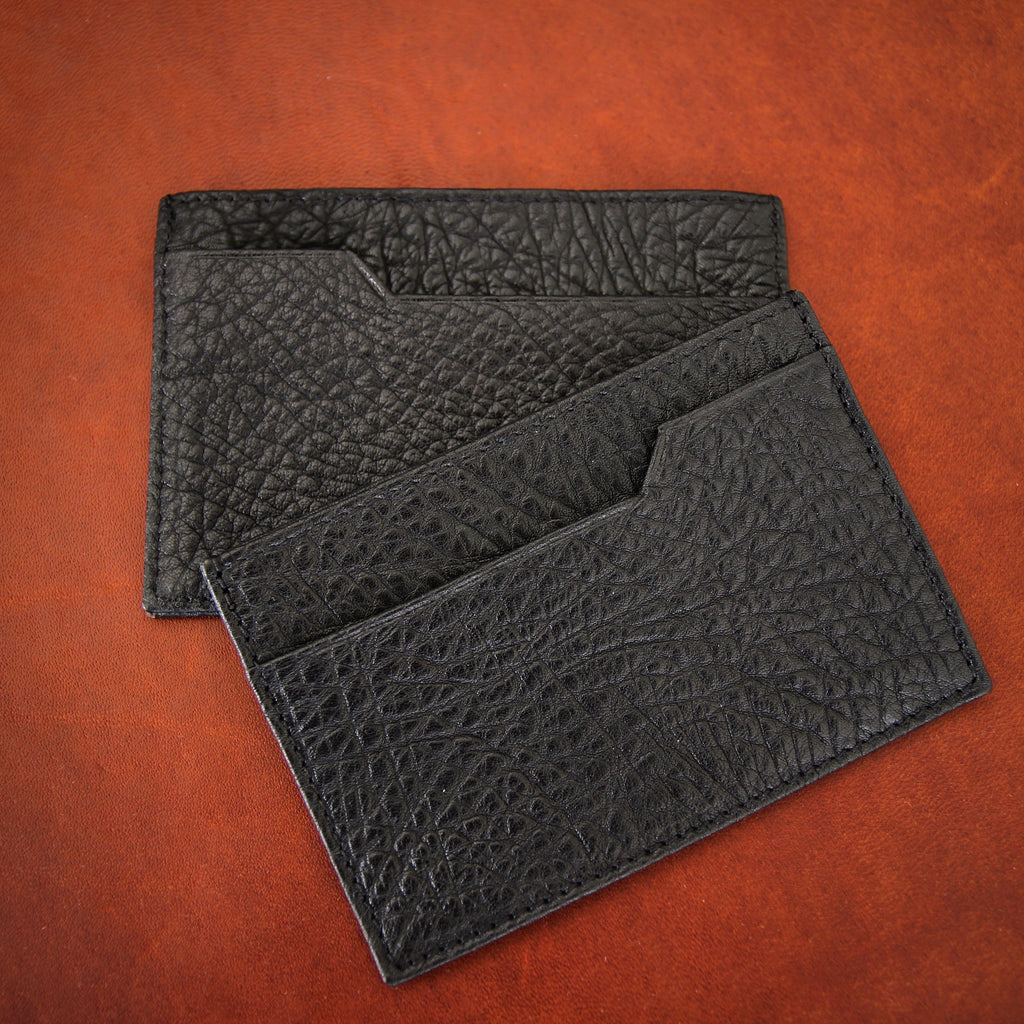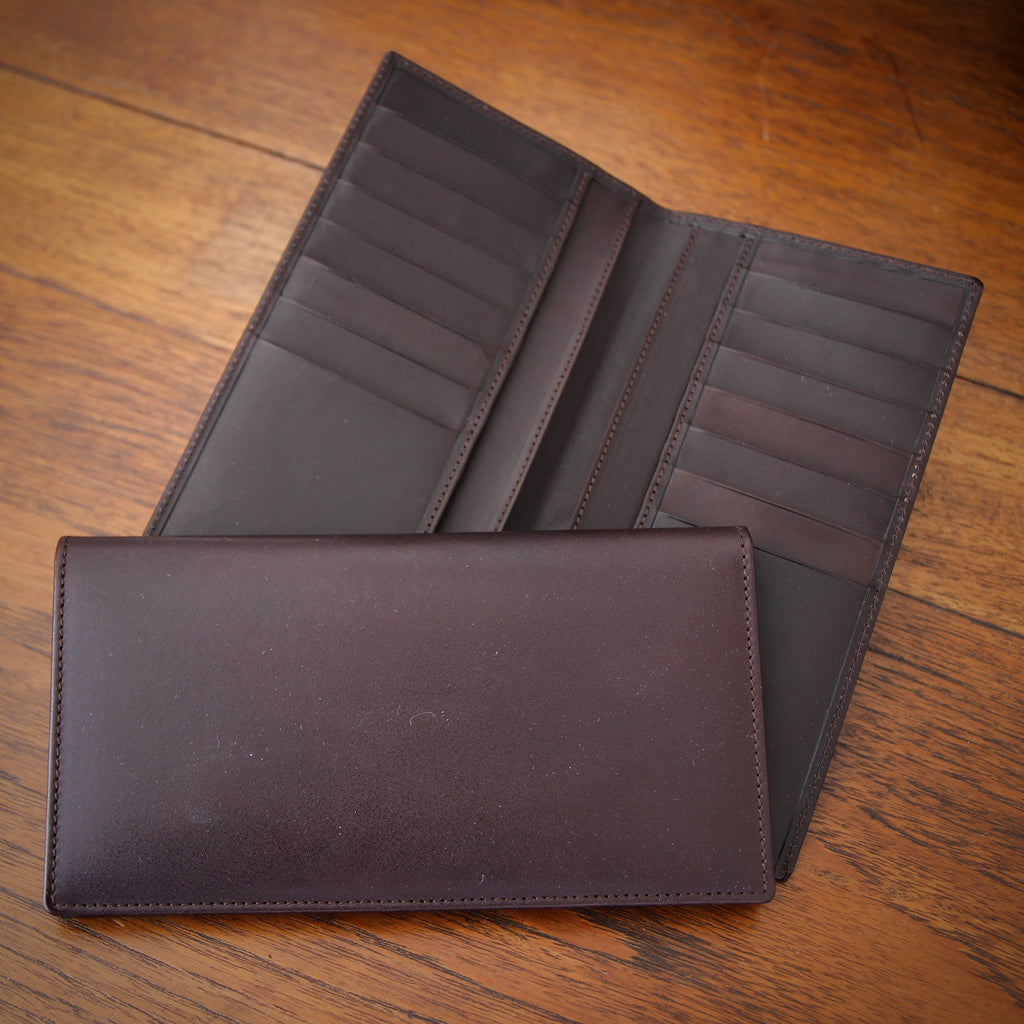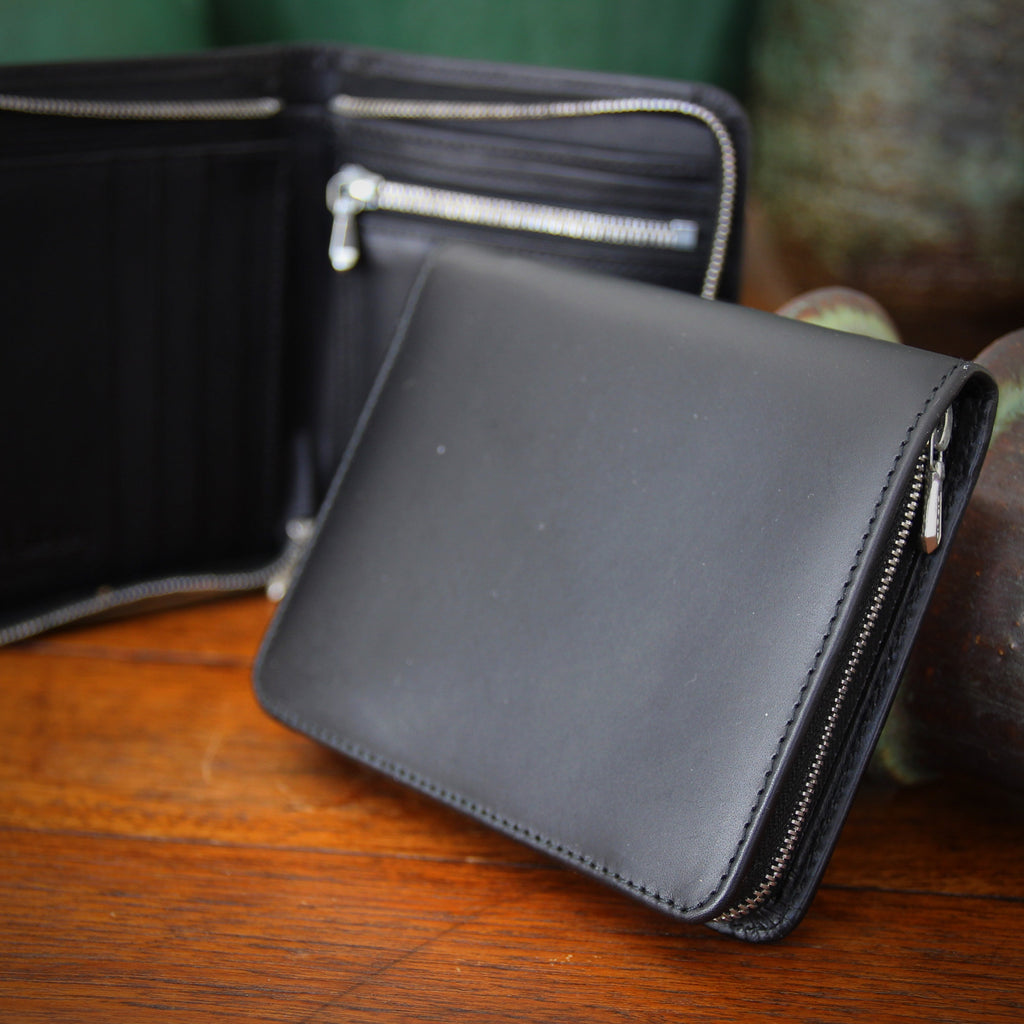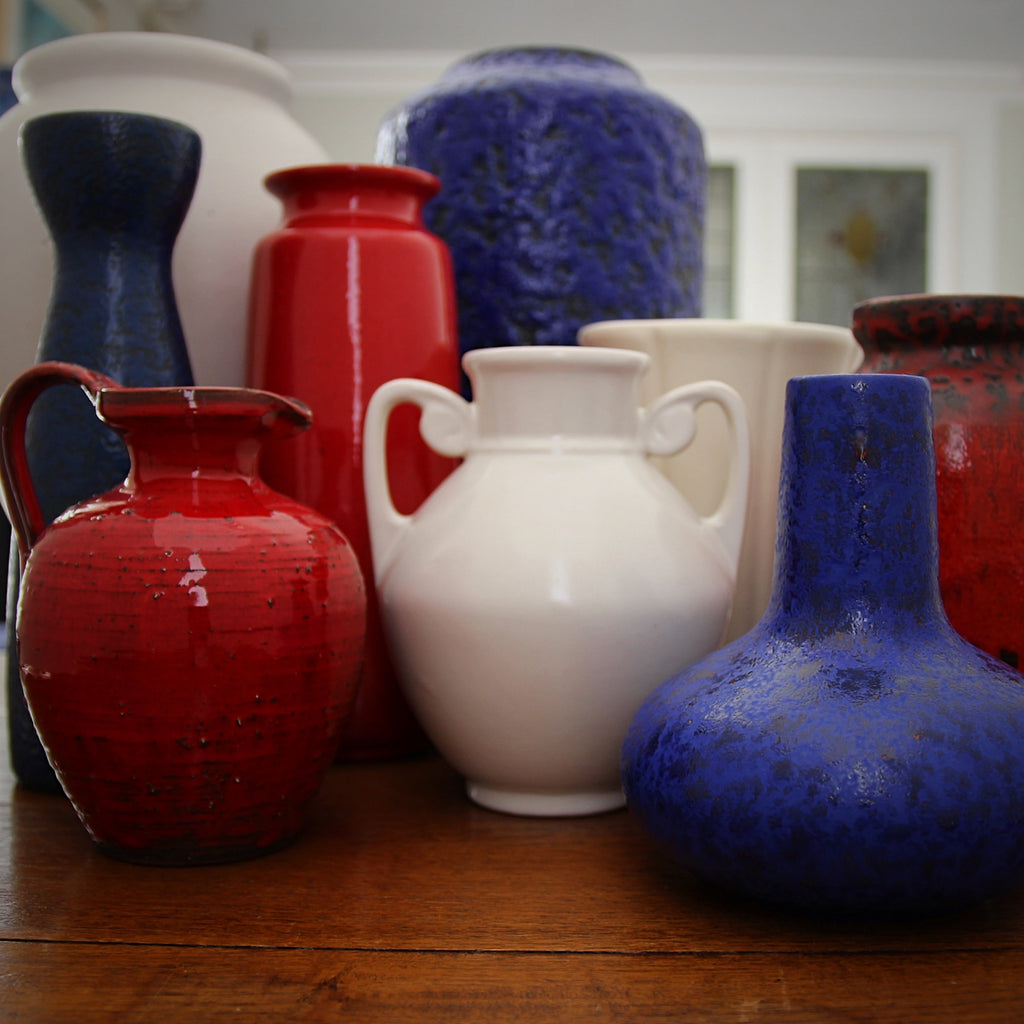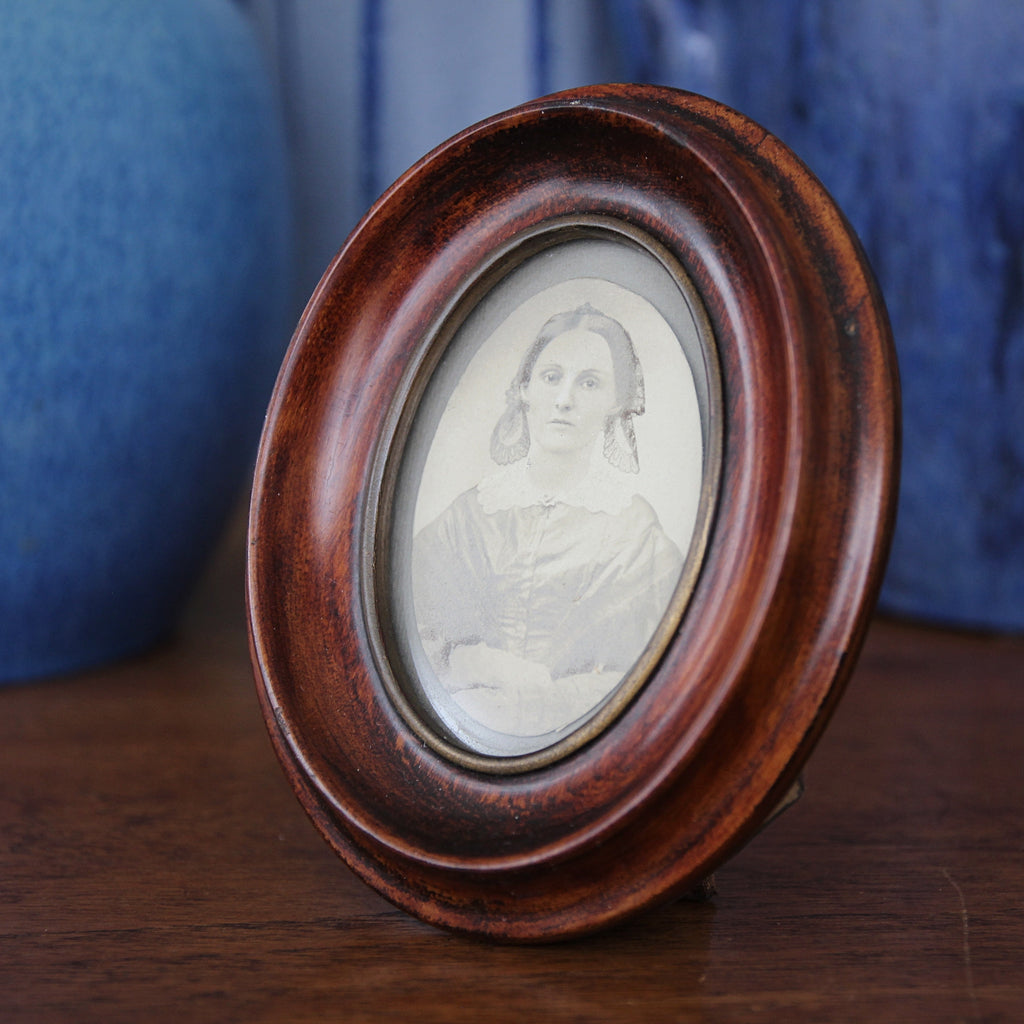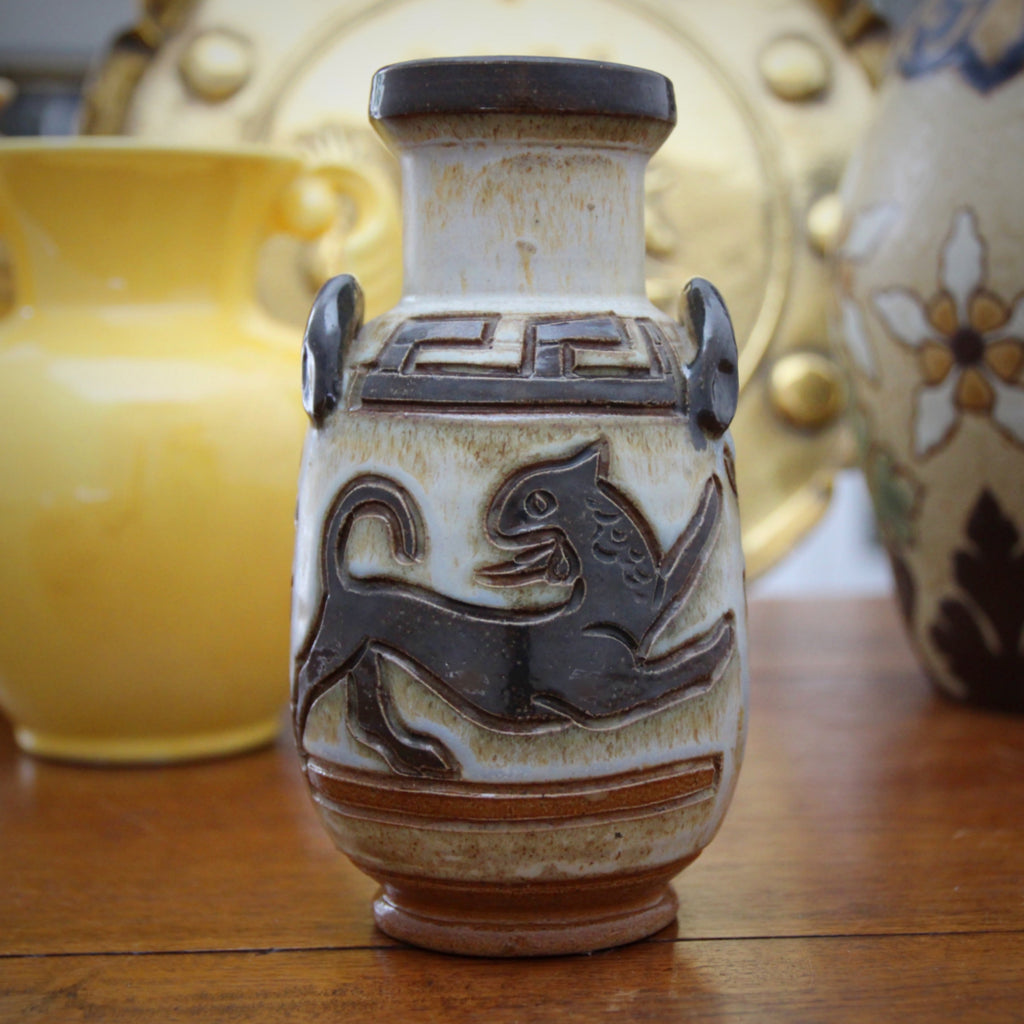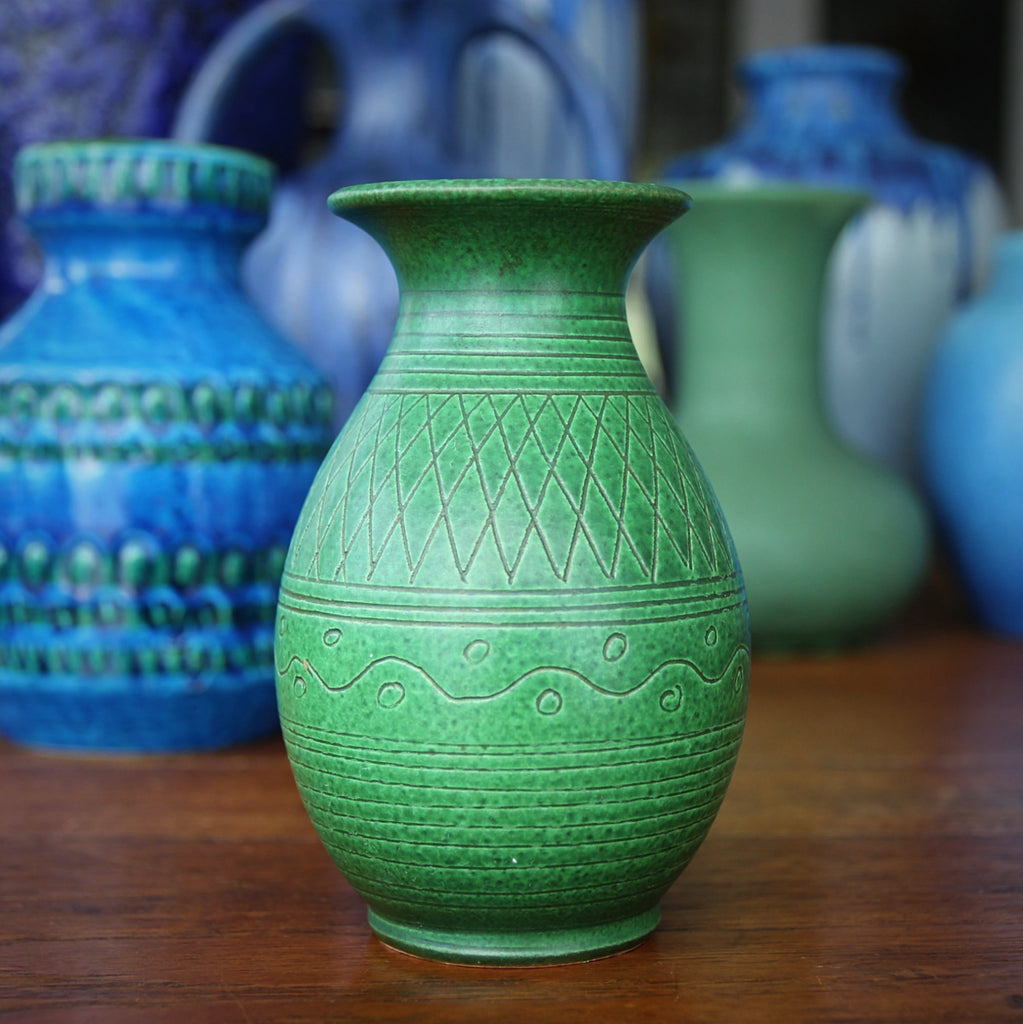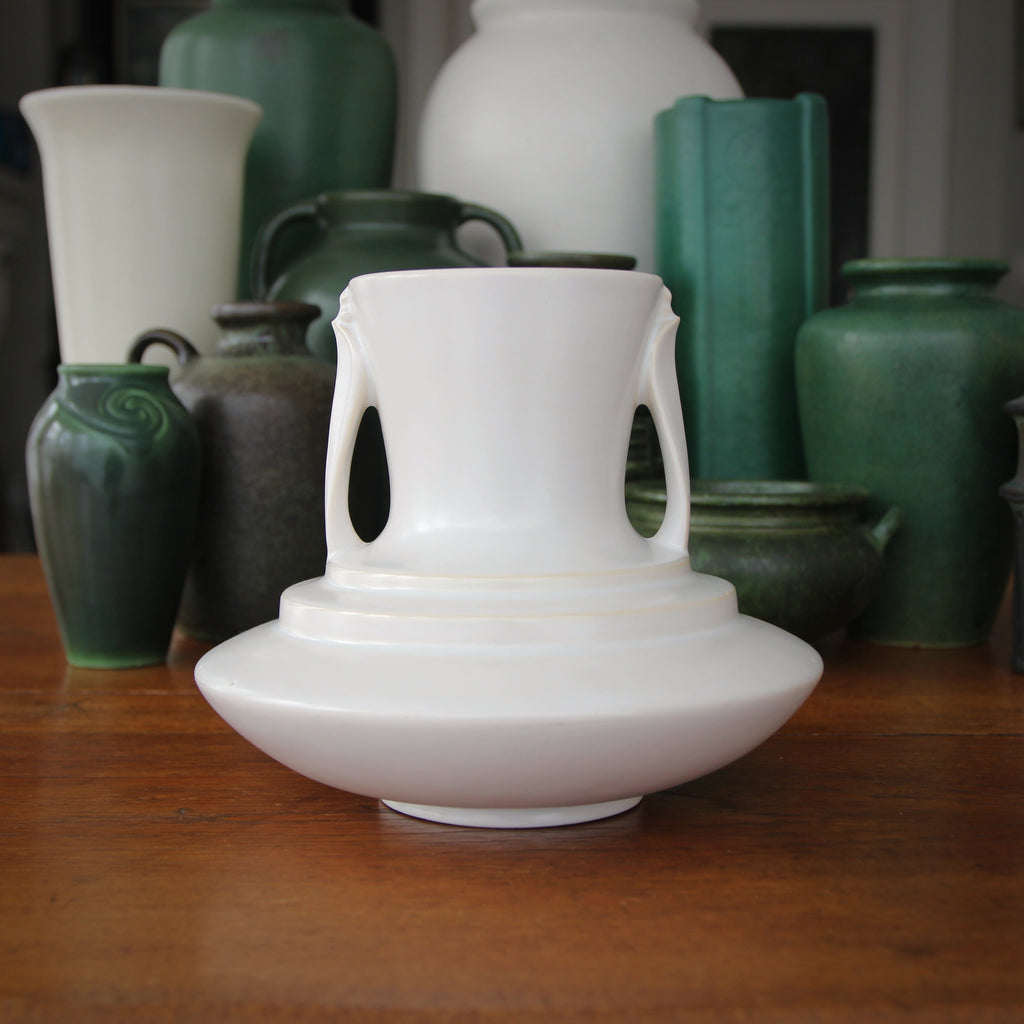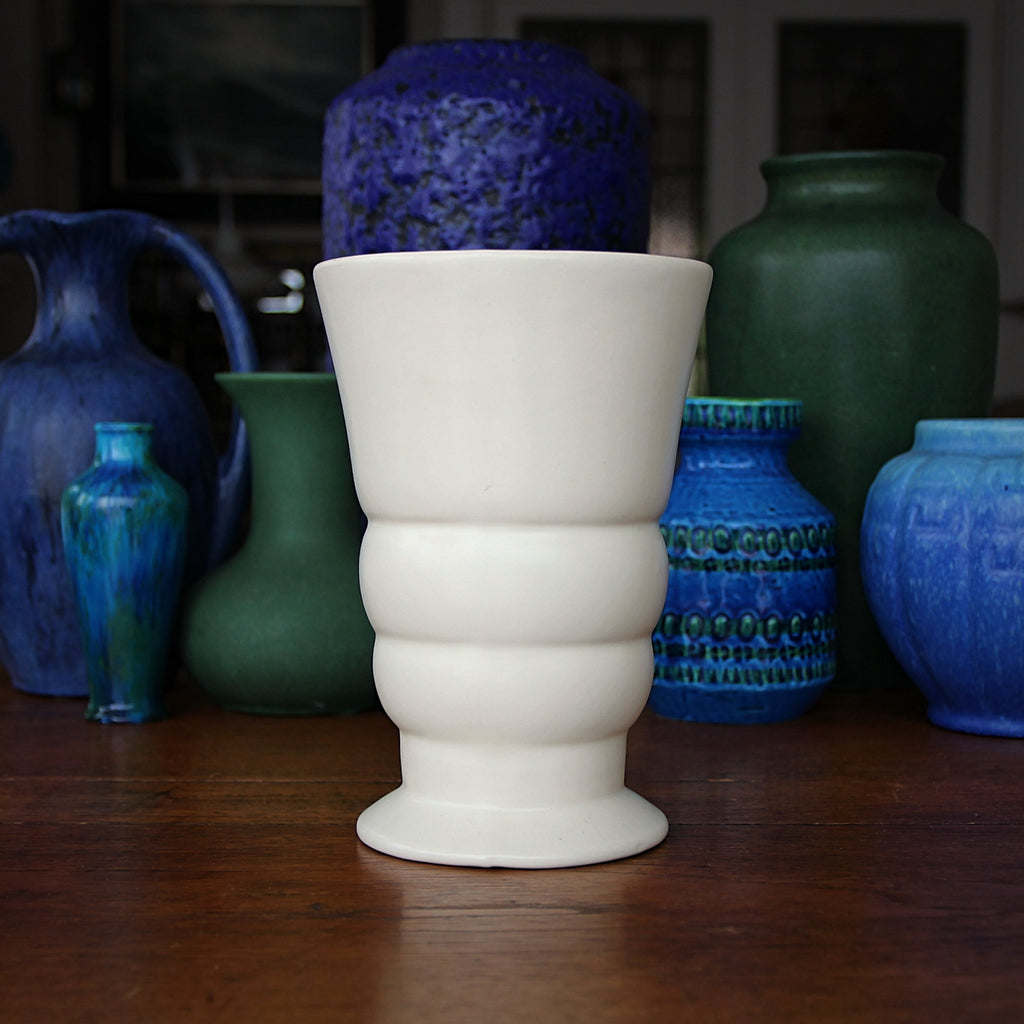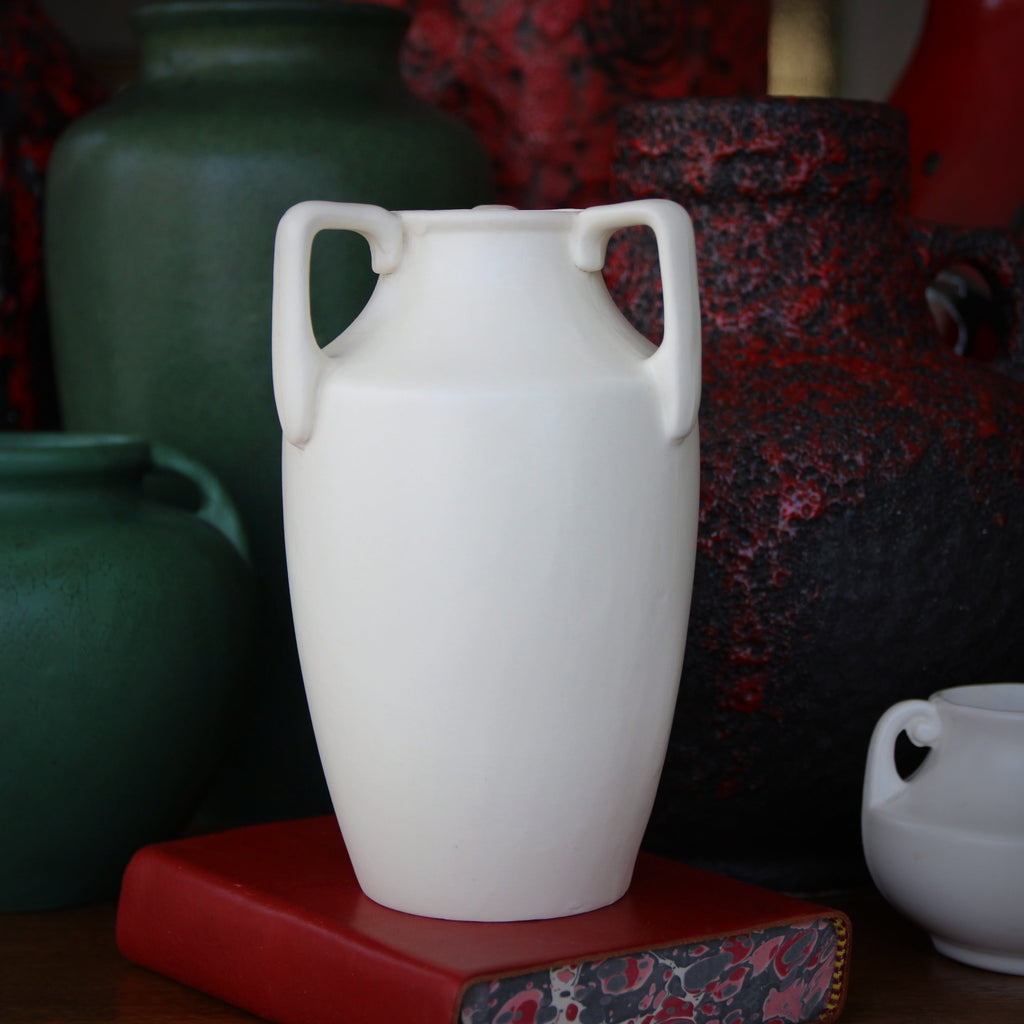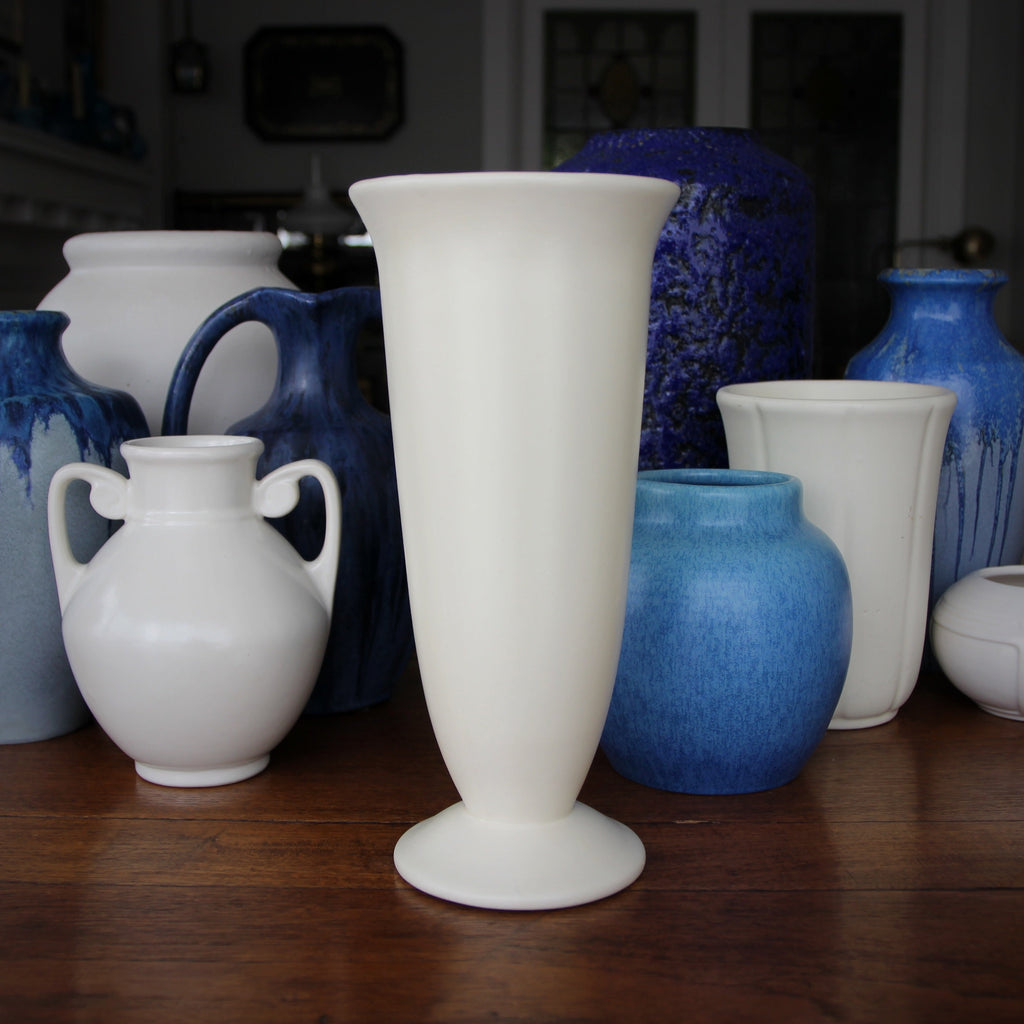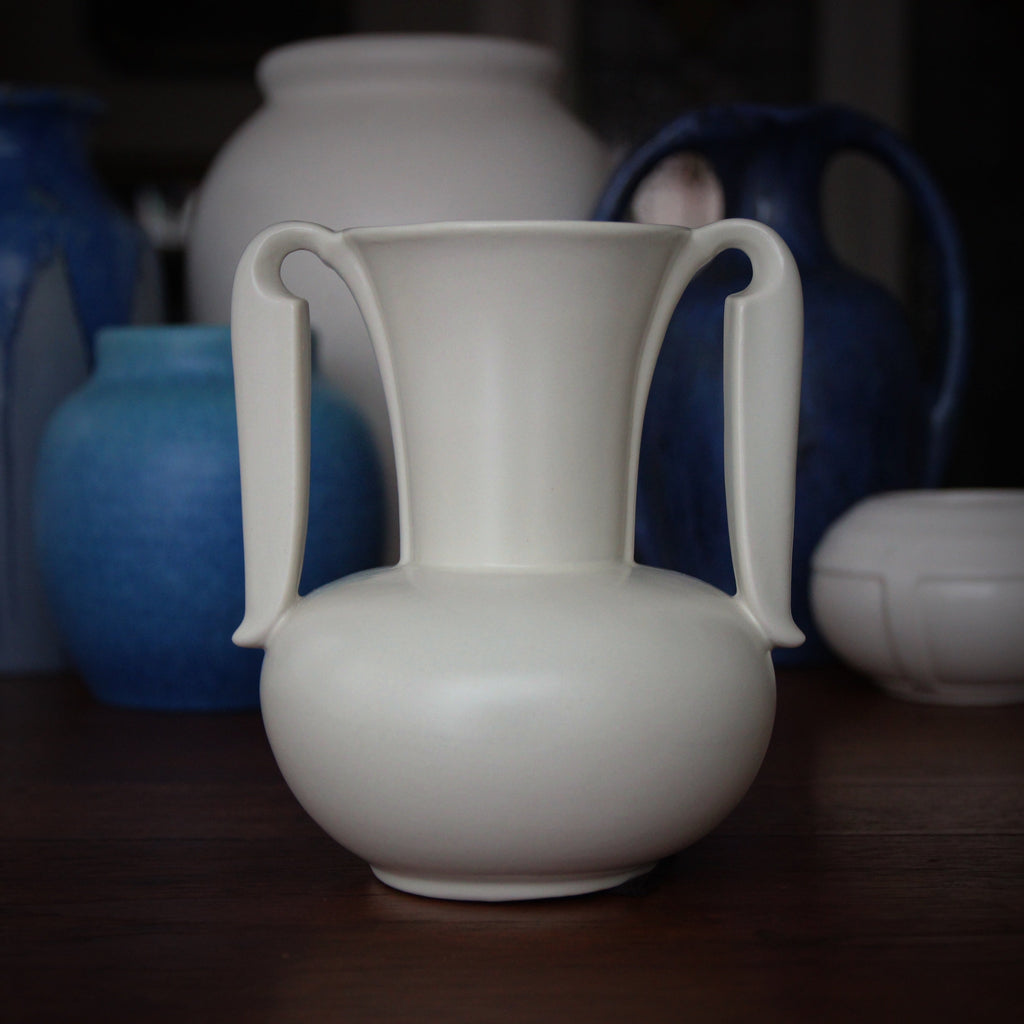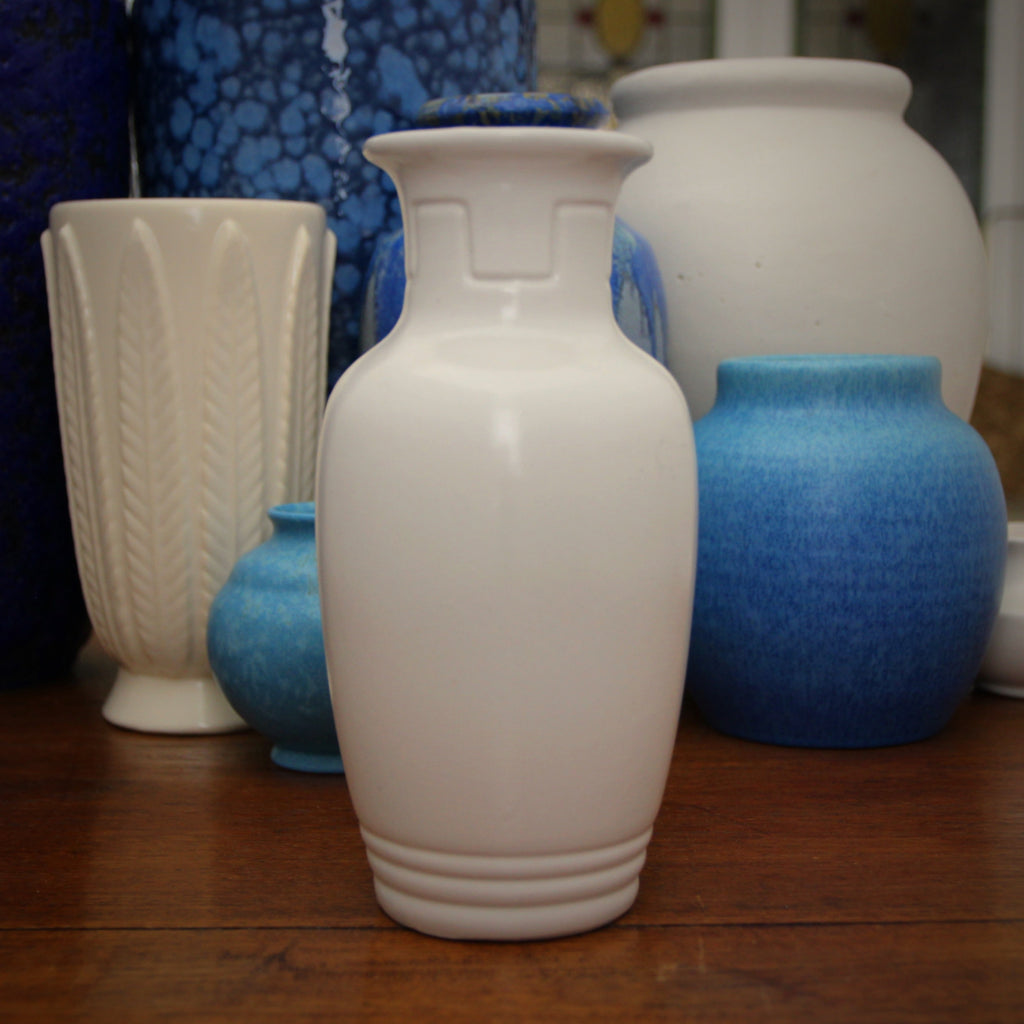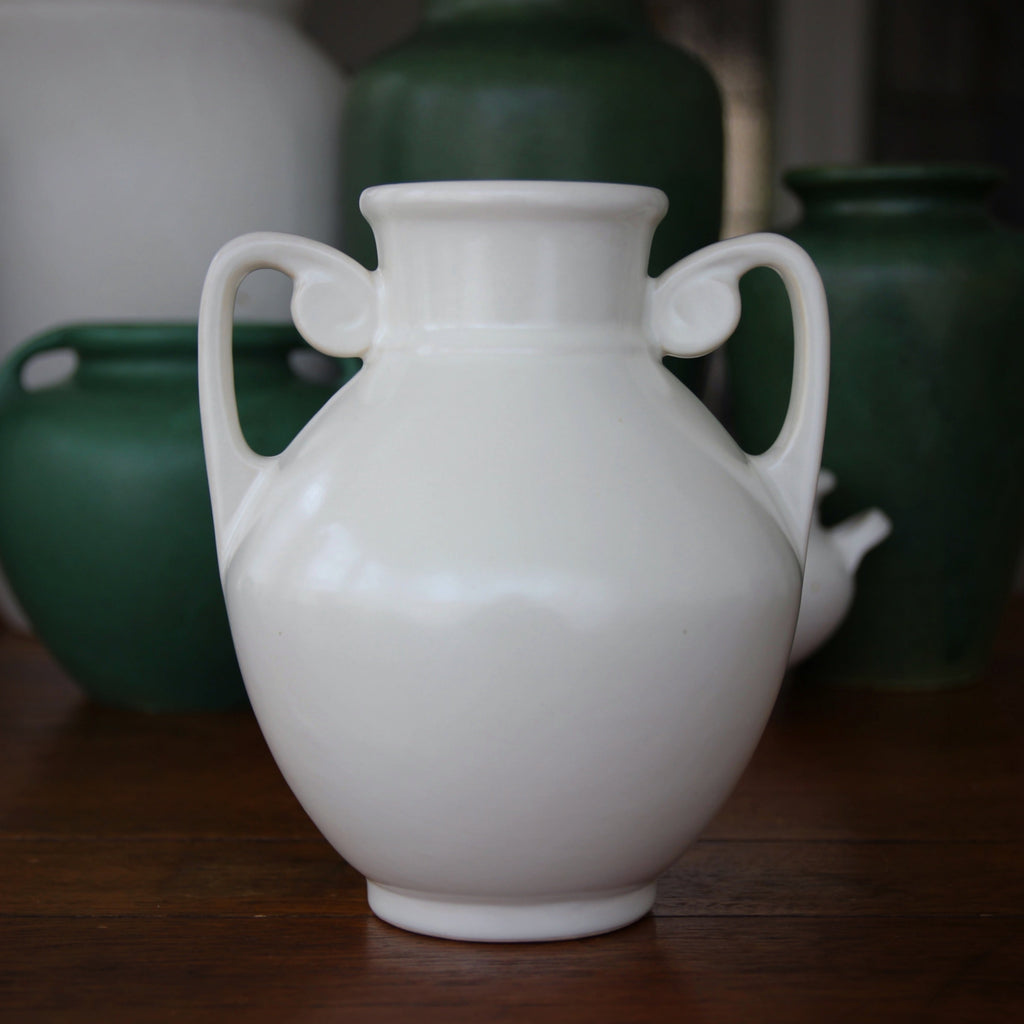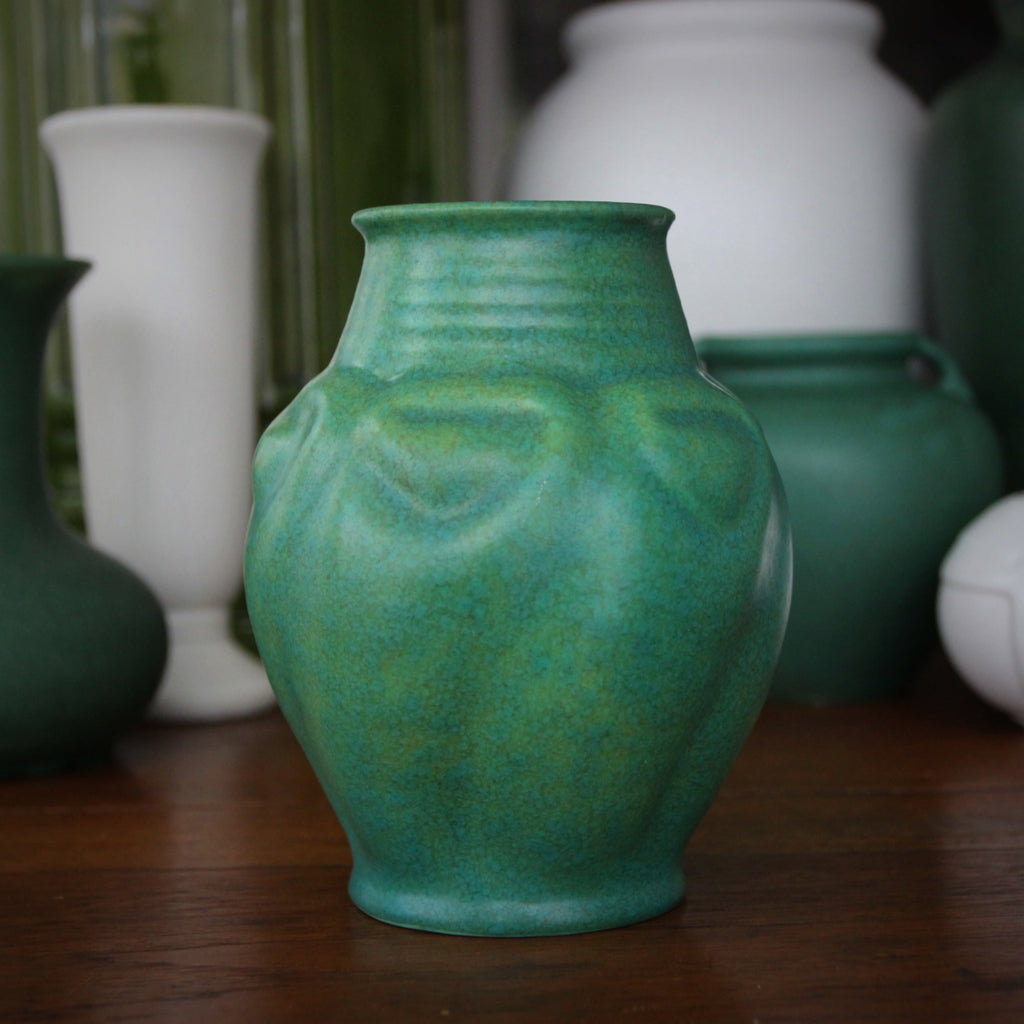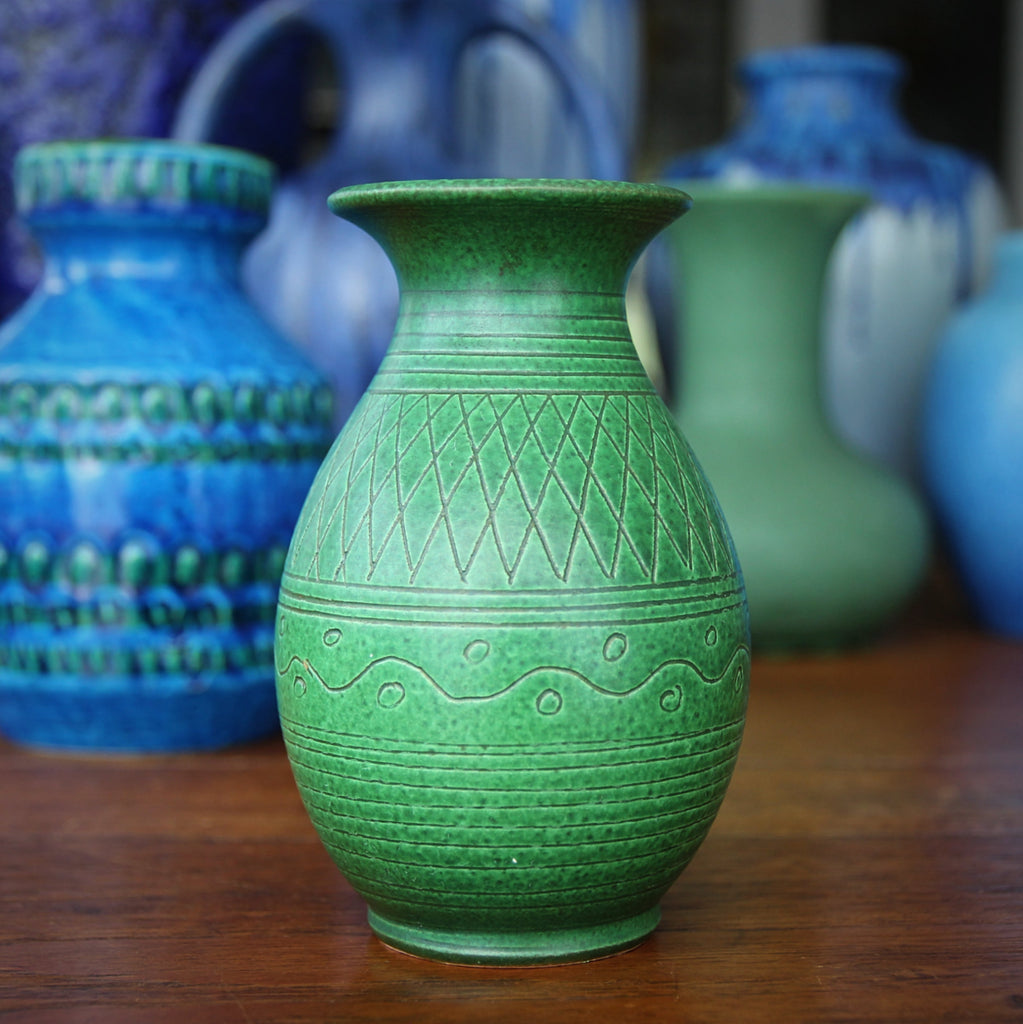JOURNAL RSS
In 1822, Joseph Huntley opened a biscuit and confectionery shop in Reading, Berkshire, an important stop along the stagecoach route between London and the West of England. Huntley's shop was across from the town's major inn and his customers were the travelers who lodged there for the night. In order to protect his biscuits from being crushed, he packed them in metal tins. His son, also named Joseph, opened a factory for producing the tins. Before long, the idea was hatched: why not make the tins beautiful and collectible—making them a significant part of the consumer experience?
Reliquary
We all have precious objects which need to be presented and protected—an item which calls for a reliquary, of sorts. This bevelled glass footed casket is a handsome solution to that task. Spelter ("white metal") framing joins the bevelled glass panels. The top lid hinges open. Use it to display a pocket watch, an awards medal, or some other cherished possession.
Gregory Seymour Allen, Sculptor
In less than a month's time, the Sun will be passing through LEO. I suppose I could wait to present these bookends, but I'd rather share these beauties now! These bookends were modeled by American sculptor Gregory Seymour Allen (1884-1934). He was born in Orange, New Jersey, and worked in New York City before moving west to Glendale, California. He is known, primarily, as a sculptor of "historical" themes—usually famous personages—in politics, history or the military. He designed plaques, medallions, medals, and the occasional pair of handsome bookends (or other desktop accessories). Allen often sculpted in the bas relief style, including this pair of regal lions. Allen was also a talented Impressionist painter, mostly having painted California landscapes. These handsome...
Art Nouveau, Creepy & Crawly
The Art Nouveau Movement—which we translate as "The New Style" or "The Modern Style"—came on the heels of the Nineteenth Century's "Great Leap Forward." It was a time of progress and increased understanding of science, discovery and critical understanding. At the Turn-of-the-Twentieth-Century, industry boomed. The Middle Class grew. And more people (for the first time) had a little extra money to spend on luxuries, rather than spend every last penny on necessities. This expansion of wealth and markets had an enormous effect on artists, designers, and those who employed them to create and produce merchandise for a growing Middle Class. Whereas, in the past, artists were "commissioned" to work for the "very few, very rich" patrons, artists were now...
Canopic Jars
The Ancient Egyptians had detailed and specific funerary rites—carried-out with precision and filled with religious symbolism. Of course, the more wealthy and powerful received more elaborate (and expensive) treatment. Embalming was a part of this process. Embalming was meant to safeguard the body from decomposition. The Ancient Egyptians believed that the body must be preserved in order for it to be reborn into the afterlife. Egypt's dry climate certainly aided in the preservation of bodies. But practitioners of the funerary arts knew which methods worked best. It was important to remove from the body any of the parts which were likely to decompose, thus putrefying the body: the lungs, liver, stomach and intestines. These organs were removed, salted, and each...
Flower Frogs
A flower frog is a device used to assist in floral arranging. It helps to hold-in-place the stems which might otherwise shift out-of-place. Most often, one will see frogs used when arranging stems in a low bowl. With a taller vase, the high walls and "throat" of the vessel helps to consolidate the flowers. But arrangements in a bowl—especially when very few stems are used—can be much more challenging to affect the perfect look. It is believed that flower frogs originated in Japan in the 1300's. The Japanese dubbed them kenzan, which means "sword mountain." They were spiky, needle-like structures which were perfect for ikebana arrangements—in which very few (three? five?) perfect stems were positioned (perfectly) in a low, horizontal...
A Handsome Finish
A nice frame really sets-off the image within. Whether looking at a painting in a museum or a photo on a bedside table, a good frame draws attention to the picture—and complements it—without overpowering or distracting from "the main event."
This photo frame, made in the Twenties or Thirties, is crafted of brass—pierced to give it a filigree effect. The four corner embellishments provide a small flourish which helps conceal the joinery. And the original glass is softly curved, giving the surface a slightly convex lift (which protects the image from direct contact with the glass).
One Month 'Til LEO
In one month from today—on 23 July—the Sun enters the zodiac sign of LEO! 30 years ago today, in the early Summer of 1995, we were scrubbing, building, painting and arranging—preparing to open our first store at 413 Bleecker Street. While the contours of the shop, its appearance and content, have shifted (and clarified) over the last three decades, I knew from the very start that the store would be called LEO. I have always appreciated my sun sign, for which I thank my mother and father. Shown here, a group of 65 painted, wooden blocks. Most of them have lettering; some of them are decorated with the silhouettes of Disney characters or other fanciful illustrations. And some of them...
Temperature's Rising . . .
Yesterday was the first full day of Summer; the Summer Solstice began at 10:42 pm on Friday night. And (boy!) it's getting hot! Sweat-it-out in style with this handsome turn-of-the-century thermometer. The mercury thermometer is mounted upon a brass plate, engraved with the graduated temperature readings. The brass plate, in turn, is mounted to a wooden backing—fitted with a hanging loop. Gall & Lembke was founded in 1869 by Joseph Gall and Charles Lembke. They were headquartered at 21 Union Square and considered the premier maker of optical devices. The thermometer, shown above, was probably not made by the company. But it was intended to promote the company. The company name and address are engraved at the top of the...
Back in the City - III
For most of my adult life, I have lived in apartment buildings. If you count college dorm rooms, I had lived in an apartment for 35 years before moving into a house. Houses provide space, most importantly walls for hanging art and building bookshelves. They also (sometimes) are surrounded by garden space. Houses also provide isolation, though this feature is less important to me. Apartments, on the other hand, provide convenience (the Superintendent is a phone call away). Apartments also are green and cost-effective—which, I suppose, is the benefit of their "economies of scale."
To my taste, the most "alluring" apartment building in New York is The Dakota. But The Apthorp has always been appealing, too.
Back in the City - II
The second "major event" of this week's trip to New York was to see the Sargent & Paris exhibition at the Metropolitan Museum of Art. I love John Singer Sargent. After my husband (Bob), Sargent (1856-1925) is my favorite artist who lived in the Twentieth Century. When I first moved to New York in 1990, I was horrified to discover that the Metropolitan Museum was hanging Madame X—possibly Sargent's greatest painting—in a stairwell. In a stairwell! This notorious painting, exhibited at the Paris Salon in 1884, caused such a scandal (in Paris!) that Sargent eventually moved from Paris to London in 1886. He lived with the picture in his private collection for three decades until 1916, when he appealed to...
Back in the City - I
We've come back-to-the-City, just for a visit. Boy do I miss it. Every. Single. Day. We've been here for a few nights. A couple of events top our agenda. First, we attended a memorial service celebration for our dear friend, Anne Kaufman. It was held in a fourth floor function room at Sardi's, a restaurant in the theatre district. The photo shown here was shot out the restaurant's window. Anne died this past March at the age of 99—just 102 days short of her 100th birthday! Anne was the daughter of the American playwright George S. Kaufman. She was full of stories: about her colorful girlhood, about her father's colorful affairs, about the colorful stars and artists she knew from...
Waterloo!
Never underestimate the eagerness of the English to remind the French of their biggest battlefield loss to the English (or vice-versa). In this case, The Battle of Waterloo (18 June 1815) remains the permanent reminder of England's military dominance. That battle also marked the end of the Emperor Napoleon and the Napoleonic Wars (1803-1815).
The brass lion sculpture, shown here, was made in England in 1915—a commemorative item at the time of the battle's centenary.
Waterloo, in 1815, was part of the Kingdom of Netherlands. (Today it is part of Belgium.) Two allied armies—one led by England's Duke of Wellington, the other led by Prussia's Field Marshal Blücher—confronted the French under Napoleon Bonaparte.
Old Meets New
This Italian leather canister is an intriguing example of Old World craftsmanship meeting Modern World technology (about a century ago). Florentine gold-embossed leather is "wrapped" around a Bakelite canister—and fitted with a screw-down lid. Bakelite was invented in 1907. It was a leap-forward in the development of synthetic materials—plastics, actually. This remarkable new invention could be molded into complex shapes. It was suited to mass-production. And Bakelite was heat resistant—making it highly adaptable to use in the exciting, new Twentieth Century. Light bulb sockets, lamps, radios and (later) television parts were made of Bakelite. In the right color (and polished) it was attractive, durable and easy to produce. Numerous desk and household items were crafted in Bakelite—as was jewelry...
Light My Fire
In the days before electric ignition, matches were a common and necessary household implement—in the kitchen, in the dining room and at the fireplace. "Strike-anywhere matches" needed a safe and attractive container for safekeeping (sometimes called a "match safe"). As strike anywhere matches were combustible (and could, theoretically, be ignited if rubbed together), they required fireproof containment (in a vessel as air-tight as possible). And, because such a match holder was on prominent display on the mantelpiece, it should be attractive, too. This heavy cast iron match holder was made in the third quarter of the Nineteenth Century. It still retains its original black and golden paint. And the gold paint is richly-aged—never to be confused with the glitzy "shiny...
Happy Father's Day!
Happy Father's Day to all the men who helped to raise, teach and inspire children—men who provide(d) the best examples of self-discipline, integrity and kindness. Conceiving a child is the easiest step. So is letting someone else raise him or her. Growing a good, constructive and honest child is the hard part (and it is the part that counts). Shown here, a Danish Modernist stoneware sculpture by Axel Thilson Locher (1879 - 1941). He designed works for the Copenhagen ceramics studio Bing & Grøndahl. Locher was born in Copenhagen to an artistic family. His father was nautical painter Carl Ludvig Thilson Locher (1851-1915)—and Carl's father was a nautical painter before him. Both Carl and Axel lived and worked in Skagen,...
Countdown to Father's Day - 1
Nice "things"—Handsome Gifts—do not have to be expensive (though sometimes they are). This bronze bison, sculpted in Canada, is heavy, handsome and full of character. (And he's not too expensive.) Perhaps your dad loves "The Olde West." Maybe he comes from The Old West. Or, maybe he just likes bison.
Which brings-up an interesting question: is there a difference between a bison and a buffalo? Yes there is! A big difference!
The creatures sometimes (inaccurately) called the "American Buffalo" (like the bronze sculpture shown here) are not "buffalo" at all. They are "bison" (scientific name: Bison bison). They were found across the open grasslands of North America.
Countdown to Father's Day - 2
We're sharing some Handsome Gifts ideas for Father's Day. Perhaps you know a much-deserving dad?
For fathers who like to fish, this Korean bronze charger is likely to tick several boxes. The bas relief modeling is superb in its detail, precision, and energy. Grasses at the water's edge, bushes upon the shoreline, even ripples in the water are all portrayed with meticulous detail. And then there's the pike: arched in combat as he struggles to escape. This sculpted bronzework is beautifully rendered and crisply cast—truly the work of a skilled artist.
Countdown to Father's Day - 3
Now: something for the father who appreciates fine and good-looking . . . books. A pair of French terracotta bookends sculpted by Joe Descamps and produced in ceramic by Louis Lourioux. Joe Descamps (1869-1950), sometimes spelled Descomps, was a master sculptor who specialized in female nudes. His subjects were often placed in pastoral or floral settings. He worked in both the Art Nouveau and Art Deco periods (and, indeed, this pair of bookends seems to be "transitional"—that is, reflecting aspects of both aesthetic schools). Descamps also designed jewelry and metal sculpture. Ceramicist Camille Louis Lourioux (1874-1930) was born into a family of potters. In his Twenties, he managed a ceramics workshop with his father. But he soon set-out on his...
Countdown to Father's Day - 4
As we count-down the days to Father's Day, we are sharing some Handsome Gift ideas which might tickle your father's fancy. Some dads like hunting and fishing. Others like tinkering under-the-hood. Some dads cultivate plants. And other dads like to read Shakespearean sonnets and plays.
There are six known signatures of William Shakespeare surviving—signatures written in his own hand. These are found on legal documents such as a court deposition, the purchase of a home, the mortgage on that house, and his Last Will and Testament. No two (of these six) signatures are spelled the same way:
Countdown to Father's Day - 5
Danish artist Knud Kyhn (1880-1969) was a master of capturing "animal energy" in his stoneware sculptures. His bears exhibit ursine energy. His cats express feline energy. And, naturally, his bulls channel bovine energy—as does the "Bull in Repose," shown here. The animal swings its heavy head—atop an impossibly thick neck—perhaps expelling the bothersome flies which have landed on his massive back.
Knud Kyhn worked for Royal Copenhagen for many years, hand-sculpting the original "models" (many of them animals) and supervising their production and glazing. Royal Copenhagen was in the business of producing "collectible" artworks, thus, they would produce a small number of each design every year—usually marking the bottoms of each piece with a date-mark.
Countdown to Father's Day - 6
Father's Day is nigh—and we'd like to share some Handsome Gift ideas for "Dear Ol' Dad." Shown here, a hand-carved wooden bear from the island of Hokkaido, Japan. This northerly island is the most productive region in Japan for farming and fishing. But, during the cold winters (when farmers come-indoors for their seasonal hiatus), the people began carving such bears to keep busy and to provide an additional stream of income. These folk sculptures would be sold to Hokkaido's annual summer tourists—often Japanese visitors escaping the heat and humidity of Souther Japan. Such tourists come to Hokkaido seeking its cooler climes, enjoying its natural beauty, and experiencing the Ainu culture (which once dominated this area). As the bears became more...
A Week of Wallets - 7
We end our showing of handsome and useful leather wallets with this beauty: a hand-stitched American alligator credit card sleeve. Made of farmed alligator and tanned with a soft, unglazed finish, this wallet is both rustic and sophisticated at once. The sleeve has two pockets on each side (four total) and a central slot. As the piece is handled, it will develop a handsome "burnished" finish—giving a soft sheen to the skin.
A Week of Wallets - 6
Here we show another credit card sleeve, perfect for a night-on-the-town. It was handcrafted (in New York City) of vegetable-dyed leather, finished with a wax rubbing. The bold edge-stitching is a little more rustic than some of the other leather goods we've shown this week. This stitching—in addition to the natural leather—gives the piece a more relaxed, casual look. And, like all vegetable-dyed leathers, the piece will develop a rich, burnished patina as the piece is handled and used. There is a pocket on each side in addition to a central "pocket."
A Week of Wallets - 5
With Father's Day coming, we are sharing some of our favorite wallets—handsome and useful—which might be a welcomed gift by someone's loving dad.
Shown here, another version of the classic English dress wallet, hand-stitiched of black vegetable-dyed pebbled leather. It holds 14 cards and has four long pockets for holding cash currency. And this handsome dress wallet will hold a (horizontally-bound) checkbook, if you wish.
A Week of Wallets - 4
Tanned alligator is beautiful. It is ruggedly handsome and sophisticated at the same time. Alligator is durable while appearing delicate. And, because of the unique pattern of scales on every piece of alligator, no two objects are exactly the same. Alligator succeeds in being both rugged and luxurious at the same time. Alligators usually live in freshwater. They have blunt, heavy snouts and can live up to 50 years. Crocodiles, on the other hand, have longer, pointed snouts, usually live in salty or brackish waters and have been known to live as long as 100 years. Alligator and crocodile skins—the patterns and shapes of the scales—do vary by species. But there is one telltale sign which helps the amateur distinguish...
A Week of Wallets - 3
This week, we are sharing some of the wallets currently in-stock at LEO Design. One of them might make a nice gift for Father's Day.
Sometimes one wants to be streamlined—when a standard wallet feels too bulky for a night out in jeans. At times like this, a credit card sleeve might "fit the bill." Shown above, an English hand-stitched, black vegetable-dyed "pebbled" leather credit card sleeve. It is designed with a pocket on each side (with room for a debit card and a driver's license) and a central slot in-between (enough room to stash a bill or two). Another nice thing: a credit card sleeve like this can fit into a front pocket without being too hefty.
A Week of Wallets - 2
A "dress wallet"—like the one shown here—is a classic (perhaps a relic) of earlier, tailored times. Picture an elegant gentleman—perhaps Cary Grant, Laurence Olivier, or Paul Henreid—removing such a wallet from the interior breast pocket of his (double-breasted) suit jacket. It has 14 slots for numerous cards and four long pockets for bills (perhaps in different, international currencies). And this dress wallet will also hold a (horizontally-bound) checkbook.
A wallet like this is not for men alone. Some woman might like its handsome and understated design—and they would likely keep it in a handbag (rather than in a jacket pocket).
A Week of Wallets - 1
With Father's Day just around the corner, we thought we'd share some of our classic and handsome leather wallets—always a thoughtful and useful gift for a generous dad.
Shown here, an English leather wallet, hand-stitched of black vegetable-dyed calfskin. Vegetable-dyed leathers develop a beautiful patina with handling—meaning the wallet will look even better with gentle use. The zipper runs around three sides of the wallet, keeping one's items safe and secure within. It also gives the wallet a "light urban look"—just a touch of Punk Rock leather and metal.
Welcome, June
We welcome June, and her flower, the rose.
Roses may be the most popular of flowers. There are over 300 different species of natural roses and there are thousands of man-made variants (cultivars) that have been developed over the centuries—selectively-bred to accentuate desired traits like color, size, fragrance, form or hardiness. 50-million-year-old rose fossils from the Eocene Period (which means, roughly, "The New Dawn") have been uncovered by archaeologists in Colorado. Roses are depicted in Minoan art (circa 1400 BC) and in Egyptian tomb paintings shortly thereafter. And ornamental roses are known to have been cultivated by the Chinese, Persians and Mediterraneans from about 500 BC.
Stylish Silver - V
Filagree is a method of decorative metalwork involving the twisting and bending and soldering of wires (usually silver or gold), in order to fashion jewelry or other decorative metal objects. The delicate metalwork is often suggestive of lace. Sometimes silver or gold beads might by incorporated into the work The oldest filagree pieces date to 3000 BC and were found in Mesopotamia (modern day Iraq, Turkey, Syria and Kuwait). The Etruscans and Greeks adopted the art form and the work spread—mostly through trade and Arab migration—and could be found from Ireland to North Africa to Asia (especially India).
In the Medieval periods, filagree was used for jewelry, naturally, but also liturgical decor: reliquaries, processional crosses, croziers, gospel book covers.
Stylish Silver - IV
The village of Taxco, Mexico, has a long association with silver mining—and, more recently, silversmithing and jewelry-making. Since Pre-Columbian times, silver was mined here. In fact, an Aztec governor was placed in the old village of Taxco so that he could conveniently collect the "tributes" (of silver) payable (by the conquered subjects) to the Aztec ruler. When the Spaniards arrived, they modernized the silver mining—creating a "Silver Rush" in the Sixteenth Century which greatly enlarged the town's infrastructure. Taxco proved to be the biggest source of silver for the Spanish Empire. When the Mexican War of Independence (1820's and 1830's) expelled, killed or diminished the Spanish colonizers, most of the mines intentionally were closed-down as the Spaniards headed for the...
Stylish Silver - III
This Victorian English silver brooch, hallmarked Chester, 1887, is as much sculpture as it is jewelry. The deep crescent is laid-on with hand-engraved strap work, further embellished with scrolling botanical elements. The jagged perimeter adds an additional jolt of energy to the silhouette.
Whenever I've asked a British antiques trader to identify one of their hallmarks, they always seem to let out a bittersweet, "Oh, it's Chester..." upon discovering that city's chevron-shield hallmark bearing three wheat sheaves. Apparently, the assay (hallmarking) office in this charming city closed in 1962. To this day, English antiques dealers seem to fondly reminisce about this little town, near the Wales border (whether they have ever been there or not).
Stylish Silver - II
This week we are sharing some of our favorite silver brooches—designs which are enhanced by their precious metal composition (not overwhelmed by it).
Shown here, a Victorian English silver brooch with a whimsical Celtic correlate design—sitting atop an otherwise serious base.
Stylish Silver - I
Silver is an "element"—that is, a pure chemical substance which cannot be broken-down further into simpler components. And silver straddles a special place in the hierarchy of "metal preciousness." While it is not a "common" metal (like copper or brass or pewter or bronze), neither is it as precious as gold or platinum. To my eye (and my mind), items crafted of gold—no matter how beautiful—cannot escape their status as . . . well . . . gold. To me, their material composition often dictates their appraisal—visually and intellectually. I truly love all those non-precious "craft" metals—the metals (or alloys) fashioned by artists to create decorative objects (by sculpting, hammering or casting). Their earthy honesty is raised to decorative status...
Memorial Day
The idea of visiting the graves of loved ones—perhaps cleaning, tending or decorating them—is an ancient custom, observed the world over. Throughout history, towns, cities, states or countries may have designated a specific day on which this might occur. After the American Civil War, Union General John A. Logan called on all Americans to observe 30 May 1868 as a National "Decoration Day"—a day on which loved ones could visit and lay flowers on the graves of fallen Union soldiers. By 1890, each US state, North and South, had adopted 30 May as Decoration Day. In 1968, the US Congress "regularized" the date to the last Monday in May—which also created a three day federal holiday. And, in 1971, the...
The Barley Twist
In the evolution of aesthetic schools, rarely is there a sharp division between the old and the new—separating what had been and what is to come. Rather, existing fashions might be modified with changes which reflect the aesthetic movement which is waiting in the wings. Such intervals sometimes (and conveniently) are called "Transitional Periods." In the case of the Arts & Crafts Movement, period artisans and designers often sought inspiration from earlier, historic ideas. Such inspiration—whether artistic, cultural, literary or historic—was specific to the locale in question. The English may have lifted references to Medieval Knights. Germans may have revived ancient folklore. The French might tip-their-hat to Gothic motifs. In the pair of English candlesticks, shown above, the hand-hammered...
Mirror, Mirror
Simplicity can be oh-so stylish. At least it is with this English Art Deco "looking glass," made in the Twenties or Thirties. The simple form—an elongated octagon—is lightly accented with a bevelled edge. Otherwise, it's just an uncomplicated, elegant, understated and useful addition to a powder room, near the front door, or over a bedroom dresser. And it would look terrific on a wall filled with mirrors—hung together in a cobbled, wall-to-wall arrangement.
No Evil . . .
How does one tune-it-out? Perhaps the Three Wise Monkeys can provide an example?
The earliest evidence of the Three Wise Monkeys—sometimes called the Three Mystic Apes—is found carved on a wooden panel above the stable door at the Tōshō-gū Shinto Shrine in Nikkō, Japan. The shrine complex opened in 1617 and the stable held the temple's sacred horses. The carved panel, portraying three Japanese macaques, has been attributed to the carver Hidari Jingorō (who may have been a fictitious artist, or the pseudonym of another master carver).
Early Photography
Even after photography became commercially popular—in the mid Nineteenth Century—having one's photo taken remained a rare experience. Unless you were a person of great fame or influence, you might take only two or three photos in your lifetime—perhaps at a wedding or some other important milestone. And the technology of the day gave the sitter few options regarding the resulting photo's size; most pictures were fairly small.
But, like today, a nice frame would make all the difference in presenting—and highlighting—a treasured photograph. Shown here, an oval walnut frame, with a curved, deeply-recessed "profile." The frame was made circa 1850—just about the time that people with a little money to spend might be able to have their photo taken.
LEO - XIV
Today's the Fourteenth day of sharing some of our favorite LEOs—commemorating the new pope, LEO XIV. We end this parade of lions with this simple, yet bold, bronze lion, made in Canada. In the world of heraldry, this LEO would be called a "Lion Statant Guardant Sinister." What this means is that the lion is standing (four feet planted on the ground), head turned (toward the viewer), and facing to the left (instead of facing "dexter," that is to the right, which is conventional). Note that "left" and "right" are oriented from the point-of-view of the soldier holding the shield (upon which such a lion is applied). Thus "left" and "right" are backwards from the viewer's point-of-view. Such "attitudes" are...
LEO - XIII
Cats of any sort—wild cats, house cats—will always be wild-at-heart. Deep within, all cats are hunters. Sighting, stalking, pouncing and (yes) killing are a part of any cat's repertoire. Perhaps it is this fierce, prehistoric impulse which has made lions an inspiration in the arts, literature and other human aspirations.
Shown above, a mountain lion, stalking atop a craggy rock. These cast iron bookends are deftly-sculpted, patinated with a (now well-aged) golden bronze patina and hand-painted with small details. The modeling—especially of the cat—seems to have a rough, "Rodinesque" sensibility, typical of the tastes of the Twenties. The sculptor has captured the desperate energy of a hungry lion.
LEO - XII
The lions portrayed on this pair of cast iron bookends are modeled after Antoine-Louis Barye's 1840 sculpture called "Walking Lion" (which we shared in this journal a few days ago). The bookends were made in the Twenties by Bradley & Hubbard of Meriden, Connecticut. After the original bookend models were sculpted, the pairs were cast in molten iron and finished with a chocolate bronze finish. Bradley & Hubbard was known for its well-finished metal castings. While never at the elite level of a Tiffany or Gorham, Bradley & Hubbard was, nonetheless, very well-respected, making beautifully designed and finished metal objects for America's Middle and Upper-Middle classes. One more significant observation: This pair of bookends was designed with "mirrored" lions—that is,...
LEO - XI
LEO Design is sharing some of our favorite LEOs this week, as we mark the election of the new pontiff, Pope LEO XIV.
Shown here, a Turn-of-the-Century cast iron lion bank. Years of aging has left a darkened and highly-textured surface—while traces of the original golden paint are still visible in the mane. At one time, deposited coins could be removed by unscrewing the two cast iron sides—held-together with a screw. Over the decades, the screw (and two connected halves) seem to have fused-together, making it difficult (or impossible) to open-up. But this handsome vintage lion would easily earn his keep just standing-around, looking good. And think: he was made sometime during the papacy of the last Leo, LEO XIII.
LEO - X
We started our parade of LEOs with this same sculpted design—however, finished in a darkened bronze patina. Here we have a pair in its original golden finish. Bookend foundries would customarily offer their wares in two or more finishes. Classic, chocolate bronze was probably most common. A copper patina was popular. Brass finishes were sometimes offered. And a golden finish, like we see above, was another option. Some (but not all) bookends might be offered in a hand-painted, polychromed (multi-color) finish. One hundred years of use and exposure to the interior elements add their own patina-of-time. The crevices are probably darker than they once were. Little chips of finish—or rub marks—add their own evidence of time. For this reason, I...
LEO - IX
In honor of the new pope—LEO XIV—we are sharing some of our favorite felines here at LEO Design. All currently are available right here, on the LEO Design website.
This lion, cast in spelter (sometimes called "white metal"), is "cold-painted" after casting, cooling and chasing (that is, cleaning-off any burrs or irregularities from the casting process). This King of the Jungle expresses a gentle, stately demeanor—seemingly at-peace. He pauses atop a small mound, surveying his kingdom to the horizon.
LEO - VIII
Cats—of any size—will always be wild hunters-at-heart. Such is the allure of big cats; such is the allure of house cats. Here we see a pair of nicely-modeled and crisply-cast bookends which portray our hero—a LEO stalking some quarry which only he can see. The sculptor captured beautifully the coiled energy, the silently-creeping tension, of this hunter. He crouches atop a rocky outcrop, keeping low as to not reveal his intention. Even the rocky "pedestal" is beautifully rendered and cast. The bookends still retain their original, handsome bronze finish
LEO - VII
This six-lion candy mould ticks two boxes for me—for I love LEOs and I love chocolate!
It was made in the 1910's and, judging from the weight of the metal, it was probably intended for a commercial candy maker. An exterior plating of copper lies-over the steel "tray." I picture all these little chocolate LEOs, wrapped-up in golden foil, sitting in a partitioned chocolate box. Such were the good old days—when each city or town supported its own Mom and Pop candy shop.
LEO - VI
For these two weeks, we are commemorating new Pope LEO XIV with a parade of handsome lions, now on sale at LEO Design.
On the tummy of this little bronze lion is the impressed word "Courage." Though small, this brave little lion could be your reminder to remain resolute—or it may be a wonderful admonition to someone you love.
LEO - V
Lions have enjoyed a long history in the decorative arts. This rampant lion—incised upon a Belgian Art Nouveau vase—looks like he could have come from Minoan Crete or Mycenaean Greece. It is true that ancient themes often have been "recycled" by later artists—especially after a new archaeological discovery is made, inspiring new takes on old artworks. This two-handled stoneware vase was made in Belgium by Antoine DuBois (1869-1949), probably around 1920. Initial excavations as Knosos, the remarkable palace on the island of Crete, began in 1877. Much archaeological progress was made in the earliest years of the Twentieth Century—right before this vase was conceived. Crete is considered, by many, the "cradle of Western Civilization." Crete's Minoan art and civilization (3000-1150...
LEO - IV
Parisian Antoine-Louis Barye was the greatest animalier of his time—that is, an artist who sculpts realistic animals. He was born in 1796 and got his start as an apprentice under Napoleon’s goldsmith. In 1816, he was admitted to the Ecole des Beaux Arts where he pursued sculpture—initially honing his talent with medallions and bas relief works. Barye enjoyed spending time sketching animals of the Royal Menagerie in Paris’s Jardin des Plantes—and his sketches have been favorably compared to Delacroix’s. From these sketches, the artist would craft small clay models which he would cast in bronze. Both his sketches and his cast bronzes succeeded in capturing the wild, naturalistic personalities of their subjects. Barye also produced monumental works in addition to the...
LEO - III
As a child, I had a Ringling Brothers circus poster on my bedroom wall. A fierce lion—paw raised—snarled from the colorful print. This pair of Art Deco cast iron bookends remind me of that LEO from my boyhood. These bookends were made in the Twenties or Thirties. They are beautifully (and intricately) modeled, nicely cast and finished with a (now aged) dark patina. They await employment in your office or library—or standing upon your mantel or windowsill where they will snarl silently (yet fiercely).
LEO - II
In commemoration of the new pope—LEO XIV—we will be spending the next fourteen days sharing some of our favorite, handsome LEOs, currently on-offer on this website. Shown above, a cast iron lion bank from the Turn-of-the-Century. It has a rich, dark patina, acquired over more than a century of standing guard. It makes a wonderful sculpture, though I would hesitate to use it to store my coins. I'd advise against using a screwdriver to unscrew the two halves.
LEO - I
Over the past two-and-a-half weeks, I have been captivated by the solemn grandeur on display as the Catholic Church commemorated and buried its beloved Pope Francis. The subsequent period of discernment and the election of his replacement have been equally riveting—with its timeless ritual, drama and (yes) theatre. As a practicing and devoted Roman Catholic, I was highly interested in (and engaged with) the unfolding process and its outcome. Like most Catholics, I hold personal convictions and preferences of how I'd like my Church to journey-on. (Grazie, Francesco!) I also realize that this 2,000 year old institution does not make many sudden jumps—or move very quickly. In this regard, it's good that (in most things) I usually support...
Welcome, May!
Welcome, May, and your birthstone, the Regal Emerald.
Emeralds—one of the four "Cardinal Gemstones"—are called "The Jewel of Kings," and they enjoy a long and illustrious history. Egyptians mined them from 1500 BC and legend has it that Cleopatra decorated her body and her palace with the gemstone. They have been mined in Austria and India since the 1300's and, in 1535, were discovered by Spanish explorers in Columbia (which remains the largest source of emeralds to this day). Emeralds have been credited with increasing fertility, providing immortality, conferring riches, power and eloquence, strengthening memory, counter-acting poisoning or infection, and empowering its wearer to predict the future.
And Different Again
The British Arts & Crafts Movement began in the Late Victorian Era—which accounts for the more highly-decorated, florid demeanor of some (but not all) British Arts & Crafts objets. In America, we sometimes associate the Arts & Crafts with a more linear, angular, perhaps severe aesthetic (think Stickley or Frank Lloyd Wright). In England, people like William Morris were at the forefront of the Arts & Crafts "revolution"—and English Victorian "busy-ness" made its influence felt. The small mirror, shown above, is surrounded by a hand-tooled brass frame, mounted upon a red-velvet-wrapped board. The intricacy and crisp execution of the brasswork are remarkable (click on the picture to magnify it)—though the entire presentation of the mirror is not fussy or frivolous. Its...
Now, For Something Quite Different
Compared to the mirror we shared yesterday—a theatrically romantic Chinese confection—today's mirror, shown above, is straightforward, sensible, and perhaps just a touch stern. It is handsome without being dour. It was made in the U.S. between 1840 and 1860, just before the American Civil War. Mahogany veneering is laid over the curved "ogee" surface of the underlying wood framing. There are a few minor splits and discreet dings to the veneering—though only enough to lend suitable character to the 175 year old mirror frame.
Mahogany was the wood of choice for American furniture in the 18th and 19th Centuries. Much of it was grown in The New World—often in semi-tropical British colonial possessions.
Chinese Romantic
What this Chinese mirror lacks in age, it more than makes-up-for in romantic, theatrical style. The carved wooden frame—lacquered and "gilded" in golden paint—is reminiscent of a Zeffirelli production of Puccini's Turandot. Stylistically, it looks like something which would have been sent to the West in the Twenties or Thirties (though it is more likely from the Seventies or Eighties). The design was inspired by Chinese architecture (or architectural elements) with a carved wooden "fringe" dangling from the roofline and the bottom of the frame. Pierced screening surrounds a five-lobed cinquefoil—an oculus reminiscent of a classic Chinese plum blossom window or doorway. In Chinese art and symbology, the plum blossom represents beauty, courage and perseverance—since the plum blossom has been...
Thinking of Francis - VII
We end our tribute to Pope Francis—and the simple, elegant, white ceramics which remind us of him—with this handsome, Art Deco piece, circa 1935. It was made by Roseville, a ceramics workshop founded in Roseville, Ohio, in 1890. Initially, Roseville made "utilitarian wares" like flower pots and umbrella stands. Over the years, Roseville added dozens of "lines" of pottery, from the delicately hand-painted studio wares to the high-volume mass production wares. Roseville also made several pieces (shapes) which they produced as "blanks"—that is, bisque-fired pieces which could be stored for glazing (and possibly decoration) later, as the orders came in. This strategy allowed Roseville to maintain maximum flexibility, only committing to the production of a specific piece after it had...
Thinking of Francis - VI
We come back to Haeger Pottery with this Modernist piece, made in the Sixties or Seventies. It is a highly-architectural silhouette—with more than a passing resemblance to Frank Lloyd Wright's Guggenheim Museum on Fifth Avenue, New York City. Although it is firmly within the Modernist sensibility, there is still a trace of the "long tail" of the Art Deco movement (which began in the Twenties and lingered-on, evolving, yes, well into the Fifties and Sixties). It is finished with a matte white glaze.
Thinking of Francis - V
In 1886, German immigrants Thedore Ebeling and Frederick Reuss joined John E. F. Zeh (in Philadelphia) to import glass and ceramics items from Europe to America. In 1900, Zeh left the company, now called Ebeling & Reuss. The company imported European crystal, ceramics figurines, and art pottery pieces—like the Secessionist vase, shown here—to be sold-onwards to gift shops and other retailers in America.
This Secessionist vase is topped with three crisp handles and finished with a flat, matte white glaze. It was made in the newly-formed Czechoslovakia (established in 1918) and bears the date mark of 1918 - 1921.
Thinking of Francis - IV
This week, we are marking the passing of Pope Francis by sharing a collection of simple, white ceramics which (somehow) capture the elegant purity and honest simplicity of the beloved pontiff. Like Fulper Pottery in Flemington, New Jersey, Haeger Pottery began its life humbly. It was founded in 1871 making bricks, drain tiles, flower pots and tiles in Dundee, Illinois. In 1914, Haeger decided to establish a higher-margin artware division. Haeger hired-away ceramicist Johann Martin Stangl (from Fulper) to direct the new division. Thus began one of the highest volume mass-production ceramics workshops in America. Eventually, Stangl returned to Fulper (which he later purchased and renamed after himself). But Haeger continued to grow (and succeed) through the Art Deco and...
Thinking of Francis - III
So many ceramics manufacturers started their lives by making "sanitary ware" or even more utilitarian items like tiles and sewer pipes. Time and circumstances allowed these companies to adapt to the changing times, perhaps seeking higher-end, more profitable output. The Hill Pottery Company was founded in 1814 in Flemington, New Jersey. Around the time of the American Civl War, Abram Fulper purchased the company (renaming it "Fulper"). By the Turn-of-the-Century, his grandson, William Fulper II, was running the firm. In 1909, William Fulper created the art pottery division, calling it "Fulper Vasecraft." Fulper needed an experienced ceramicist to develop the cutting-edge forms and glazes of a "studio ceramics" workshop. He hired Johann Martin Stangl, an immigrant from Munich, Germany,...
Thinking of Francis - II
Abingdon Sanitary Manufacturing Company, founded in Knoxville, Illinois, in 1908, was the maker of America's finest "sanitary ware": sinks, toilets, water fountains. Their special blend of clays and high-heat firing methods created a "vitreous china" product that was beautiful, watertight, and resistant to damage. Abingdon was the first manufacturer to introduce colored plumbing fixtures to the market (1928). In 1933, Abingdon supplied all the plumbing fixtures to the Chicago's World Fair. The Depression was not good for the company; nationwide, most building projects came to a halt. Most of Abingdon's orders were cancelled. So, from 1934 to 1950, Abingdon introduced a line of "consumer" artware items—using the very same vitreous china and glazes that they used for their sanitary ware....
Thinking of Francis - I
This morning's passing of Pope Francis marked the end of a chapter of the Catholic Church. Francis was my favorite pope, in my lifetime—and many people (Catholic or not) were moved (and improved) by his call for Mercy.
Part of Francis's appeal was the conviction with which he side-stepped the enticing grandeur of the office. He could have dressed ornately. He could have lived in the opulent Papal Apartments. Instead, he chose to live in a modest apartment—alongside brother priests—and he dressed in the simple, white garments which represented modesty, purity and simplicity. This is not to say that Francis blended-in with a crowd. On the contrary, one always knew who he was and what he represented.
Happy Easter!
Wishing all a Happy Easter Sunday, a lovely Last Day of Passover, and a Beautiful Spring-to-Come!
Holy Saturday
Between Good Friday (when Jesus was killed and buried) and Easter Sunday (when Jesus rose from the dead), we have Holy Saturday—a time of contemplation and watchful waiting. Holy Saturday is the last day of the Triduum, which concludes with the Easter Vigil Mass on Saturday night. The Italian sandglass, shown above, is made of sand-cast pewter fitted with a corseted glass timer. It holds (approximately) five minutes of sand (though precise timing never seems to be of paramount importance in Italy—style and craftsmanship are). Sandcasting of metals is an ancient process, thousands of years old. An object (which one would like to duplicate) is pressed into a bed of sticky sand, creating a "mould." Then molten metal (bronze, brass,...
Good Friday
Ancient Jewish burial practices involved washing the body, anointing it with perfumes, oils and spices, and wrapping the body in linen. In the Good Friday Gospel accounts of Jesus's burial, it was the women who performed these rituals. Jesus's burial preparation was complicated by the fact that he died on a Friday afternoon, just as observant Jews were preparing for the pending Sabbath (which would begin at sundown). So Jesus was placed in the tomb quickly on Friday; the women planned to return on Sunday (after the Sabbath) to finish their work. The English Arts & Crafts two-handled pot, shown above, makes me think of the type of vessel (perhaps with the addition of a cover) in which the women...
Holy Thursday
The Mass on Holy Thursday—also called Maundy Thursday—marks the endpoint of Lent and the beginning of the Paschal Triduum (which is the three day period before Easter: Holy Thursday, Good Friday, Holy Saturday). The Holy Thursday Mass celebrates Jesus's Last Supper with his disciples (which was a Passover Seder Meal). Several important things happened during this meal, which was celebrated on the night before Jesus was to be betrayed, tried, tortured, crucified and killed. It was at this meal that Jesus instituted the Eucharist for his followers. He also got on the floor and humbly washed the feet of his flustered disciples—the Mandatum which he enjoined them to imitate. And it was at this meal that Jesus provided important (final)...
Handsome Candlesticks - Part IV
Let's end our little parade of candlesticks for Passover with this handsome pair of German Jugendstil hand-hammered iron candelabra. The German Arts & Crafts Movement was called "Jugendstil"—literally translated as "The Youth Style." Like other Art Nouveau movements, the Jugendstil emphasized human handcraft utilizing simple (natural) materials, sensuous forms, and motifs inspired by nature (botany and zoology). It was also an Avant-Garde departure (a Secession) from the prevailing trend of commercialized, industrial production. Hugo Berger was a metalsmith who opened a workshop in 1895 in Schmalkalden, a town in the state of Thuringia, Central Germany. His handwrought designs, inspired by Gothic metalworks, were mostly crafted in iron or steel--and sometimes enhanced with copper or brass embellishments. Not all of his...
Handsome Candlesticks - Part III
This week, we are observing Passover by sharing some of the handsome candlesticks, now in-stock at LEO Design.
These smallish Victorian English brass candlesticks are perfect for just the right spot. Standing under seven inches in height (and spanning less than three inches across the base), they might very well solve this problem: how to decorate a tight spot (and provide light) without sacrificing style or presence. They could be squeezed-into a crowded dining table or sideboard. Or they might fit nicely upon a windowsill or narrow mantelpiece. They were made in England in the 1860's - 1880's.
Handsome Candlesticks - Part II
To my mind, the Art Nouveau Movement is the umbrella "aesthetic school" under which the world's various Arts & Crafts movements abide. Throughout the world, wherever an Art Nouveau Movement existed, its artisans utilized naturalistic themes (from geography, botany or zoology) to influence their work. Handcraft was essential as was the employment of simple materials.
The Arts & Crafts hammered, silver-plated candlesticks, shown above, were inspired by tulips—the stems as well as the flower petals. They were made around 1910 by Meriden (founded in 1852 in Meriden, Connecticut.) The metal (copper?) candlesticks were cast and assembled, then hand-hammered, then plated in silver. They would bring a handsome touch of nature to your dining table, presiding elegantly over your festive entertaining.
Handsome Candlesticks - Part I
As we are in the eight days of the Jewish Passover, we are sharing some of our favorite candlesticks. Perhaps one of these—or one of the many others in-stock at LEO Design—might help you celebrate the holiday in style. A baluster is a single upright support often found holding-up a staircase rail or balcony railing. A balustrade is a line of such balusters—including the railing which tops them and the bottom rail (into which they are set). They can be made of wood, stone, metal or other man-made materials. Very often they are turned (or have a "turned appearance"), like the baluster candlesticks, shown above. These English candlesticks, made in the Thirties, are turned oak (yes, in the form of a...
Happy Passover
Tonight—at sundown—begins the Jewish observance of Passover. It will last through eight nights, ending at sunset on Sunday 20 April (which, this year, happens to be Easter Sunday). The first two nights of Passover usually receive the greatest attention with families preparing seder meals. Passover commemorates an event (as relayed in The Book of Exodus) which happened while the Israelites were enslaved in Egypt. God sent The Angel of Death to Egypt who was to kill all the first borns—human and animal. Believers were instructed to slaughter and eat a lamb and (importantly) mark their doorframes with its blood. As the angel performed his assignment, he would pass-over those homes which were thus marked, sparing those people. Passover candles customarily...
Golden Links - IX
Let's wrap-up our parade of gold cufflinks with this handsome English Art Deco pair by Deakin & Francis. Deakin & Francis was founded by Benjamin Woolfield in 1786. It was located at 15-17 Regent Place, in the Jewelry Quarter of Birmingham. Initially, the firm served as a jewelry-maker for other upscale jewelers—making items for the other brands, marked with those other brands' names. Over time, the firm began to expand its own line of branded jewelry and, today, still manufactures and sells its own products. This makes them England's oldest surviving "manufacturing jeweler." They have a flagship store in the Piccadilly Arcade in London. The company still manufactures at its original location, which has been expanded and modernized several times...
Golden Links - VIII
The Art Nouveau movement in Austria was called Secessionism. It included painting, sculpture, architecture, fashion, jewelry, graphic design and the decorative arts. Vienna was not only the capital city of the Secessionist movement, it was the first city of the entire Austro-Hungarian Empire—which gave the city (and the Secessionist art movement) great reach.
The 14 karat gold cufflinks, shown above, were made in Austria around the Turn-of-the-Twentieth-Century. Yellow gold lozenges are hand-engraved with scrolling botanical elements—leaves and blossoms.
Golden Links - VII
This week we are sharing some of our favorite gold and gold-content cufflinks—handsome and tasteful accessories for the well-tailored man. The tightly-woven "basketweave" pattern on these English Art Deco cufflinks is so tiny that the weaving looks more like a texture than sculpture—creating a "no pattern pattern." They are made of 9 karat gold—a value which is pretty low. What these cufflinks don't possess in intrinsic (material) value, they make-up for in strength and durability. 24 karat (that is, pure) gold is very soft; lower karat values ensure that the metal is durable and will hold-up to use (especially on the end of a moving wrist). Click on the photo above to learn more about these handsome cufflinks. More...
Golden Links - VI
North Attleboro, Massachusetts, was an important player in the late Nineteenth and early Twentieth Centuries of the American jewelry manufacturing industry. (Nearby Providence, Rhode Island was another locus of the trade.) Like we see in England, light manufacturing was often concentrated in industrial cities, a bit removed from the populated, urban hubs. The factory space in a Birmingham or North Attleboro was much less costly than in London or New York. In 1873, Robert Fitz Simmons founded the RF Simmons Company—along with his two business partners, Joseph Lyman Sweet and Edgar L. Hixon. Each man contributed $2,500. The company's initial production comprised assorted gold-filled chains: necklaces, bracelets, watch chains and eyeglass chains. Within a decade-and-a-half, Simmons had 200...
Golden Links - V
The 10 karat gold fronts of these English Art Deco cufflinks are etched with a "honeycomb-effect" graphic. Picture them pressed against a crisp, baby blue shirt cuff—laid over a handsome, sun-tanned wrist. Summer's on its way!
Golden Links - IV
Over the years, we haven't stocked too many Arts & Crafts cufflinks in the shop. They seem to be difficult to find. This pair, made of hand-hammered 10 karat gold, are embellished with a crisply-drawn "meandering" graphic. The juxtaposition of rustic planishing, contrasted with tidy etching, creates an interesting confluence of attitudes.
Golden Links - III
This week we are sharing some of our Golden Links, currently found in the LEO Design on-line shop.
From the late English Art Deco period comes this handsome pair of 9 karat gold cufflinks. They are hallmarked Birmingham, 1949. A clean "slash" travels diagonally across the machine-turned basketweave-engraved faces. They are handsome, sophisticated and crisply-elegant.
Golden Links - II
The Aesthetic Movement of the late Nineteenth Century had a big influence on the fine and the decorative arts of the Victorian Age. Shown here, a pair of gold-content cufflinks, hand-engraved with a partitioned, botanical design, surrounded with a silver bezel. It is not uncommon to find Nineteenth Century jewelry which was never marked as to metal content. Thus, we are uncertain of the karat grade of this gold. The "toggle" fastener on the back of the cufflinks was also common in the Nineteenth Century.
Golden Links - I
For the next several days, we'll be sharing some of our handsome gold (or gold-content) cufflinks—most of them embellished with elegant and stylish engraving. Such golden links will always be a stylish and elegant accessory for any well-tailored man. Shown here, a pair of English Art Deco cufflinks hallmarked Birmingham, 1929. They were made by Owen Powell, a jeweler in the Birmingham "Jewelry Quarter" in the Twenties and Thirties. These 9 karat gold links were "machine-turned," that is, etched with the tight, precise and repetitive pattern seen here. Lathes had been used for turning wood or stone since the Ancient Mycenaeans in 1300 BC. In the Eighteenth Century, with the advent of the Industrial Age, the lathe was adapted for...
Diamonds Are For . . . April
Welcome, February, and your birthstone—the diamond. Diamonds have always been the "crown jewel" of the "cardinal gemstones," a designation which includes diamonds, emeralds, rubies and sapphires (and, at one time, amethysts). Diamonds are very old. Most were formed between 1 and 3.5 billion years ago, deep within the Earth (some 90-500 miles down). More recently (say hundreds of millions of years ago), the Earth's volcanic activity shifted the substrate, slowly moving some of those diamonds closer to the surface of the Earth (where miners could find them). And some diamonds were created by the heat and pressure of meteorites crashing to the Earth. Diamonds are also very hard. Very few diamonds are suitable for jewelry (which must be nearly...
Selling America
Sharp-eyed shoppers on e-Bay recently have discovered that important American antiquities have been listed on that selling platform—providing an opportunity for Americans to "BY A PIECE OF AMERICA'S GREAT(EST!) HISTORY!--NEVER BEEN BETTER. UNBELIEVABLE WHITE HOUSE ANTIQUES LIKE YOU'VE NEVER SCENE! ZERO TARIFFS! INVEST NOW!!!" The listings went live at 3:04 am today, April 1st. The e-Bay seller, using the name "Dealer Of Great(est) Envestments," is offering a mix of Federalist furniture, vintage brocade draperies, gilt-bronze lighting fixtures and an assortment of desk accessories: pens, boxes, inkwells and desktop picture frames. There is also a very large assortment of antique, leather-bound books—being sold as box lots—sorted by color. Although several presidential portraits were originally listed for sale, it seems that these lots...
More Light - VI
Let's end our celebration of light—we're sharing some newly-acquired lamps at LEO Design—right where we began: with another pair of Stiffel lamps. This pair, from the Seventies or Eighties, is more Traditional in styling, with a "balustrade," urn-form body. Like other Stiffel lamps, they are handsomely designed, beautifully finished, and noticeably heavy. These lamps exude a sense of propriety, permanence and gravitas. Though they could work in many different aesthetic situations (especially if the shade were to be changed), they are best suited to a Federalist, a serious, or a formal setting. Were I to open a law office (or a bank), I'd place these lamps on the two corners of my (very large) desk.
More Light - V
Haeger Potteries began its life in 1852 as a utilitarian brick maker in Dundee, Illinois. They sourced their clay along the banks of the local Fox River, a tributary of the Illinois River. In 1871, David Haeger, a German immigrant, purchased half of the company. Within a year, he had purchased the other half. He began producing tiles and operated under the name Dundee Brick and Tile. The Great Fire of Chicago, in 1871, provided a tremendous opportunity for Haeger. The company shipped millions of bricks and tiles to help rebuild the devastated city. In 1914, David's son, Edmund Haeger, introduced "artware" (decorative consumer items) to the company's production line. Edmund recruited Martin Stangl from Fulper Pottery to oversee this...
More Light - IV
This week were are celebrating Spring's increasing light by sharing some of our newly-acquired lamps, now available in the LEO Design on-line store.
The Art Deco Movement looked forward and backward—at the same time. Deco design was streamlined, aerodynamic, forward-leaning. It promoted the promise of a hopeful, efficient and mechanized future. At the same time, the Art Deco Movement drew inspiration from arts of the Ancient Past: Egypt, Greece, Rome.
Take the Art Deco glass table lamp, shown above. The two-handed urn is inspired by Ancient Greco-Roman vessels—even banded with foliage, like an Olympian's laurel crown. Yet the streamlined compactness and Machine Age curves all reach-forward to Art Deco's bright and promising future.
More Light - III
Jesse H. Bunnell was born in Ohio in 1843. At the age of eleven, he was a messenger-boy and by 13 was working as a telegraph operator (sending messages electronically by Morse Code). He was quick, efficient, and a constant inventor. At the age of 17, he set a telegraphist speed record while transmitting President Buchanan's final address to Congress (averaging 32 words per minute for a two hour duration). During the Civil War, Bunnell served as a telegraphist for both President Abraham Lincoln and General George McClellan. During the Civil War, telegraphists, like Bunnell, were only paid $60 a month—a small amount considering the critical importance of their mission and the fact that they were often at (or near)...
More Light - II
Within the world of decorative arts, ceramics are amongst my favorites items. I also love decorative light fixtures (versus built-in lighting, like canisters and recessed fixtures). Light fixtures are like the "jewelry" which decorates a beautiful room. So, for me, this Mid-Century Modernist lamp tics two boxes at once.
This large ceramic "vessel" is finished with an organic, dripping "honey and mustard" glazing. Though of simple form, the large size—and the interesting glazes—elevate the lamp to the realm of "statement piece."
More Light - I
As we move deeper into the Spring, the weather gets blessedly warmer and we enjoy increasingly longer days. More light! With this thought in mind, we'd like to share some of our newly-acquired light fixtures, currently available in the LEO Design on-line store. One of the finest lamp manufacturers in America is the Stiffel Lamp Company. Each of their (very heavy!) lamps is a work of art and precision craftsmanship. The company was founded in Chicago in 1932. Ted Stiffel—a fine artist and an accomplished craftsman—started the company to create superb, high-quality metal light fixtures. Stiffel is still in business today; they operate a 40,000 square foot workshop in Linden, New Jersey. They have continued to produce fine merchandise in...
Spring Green - VIII
Let's end our Saint Patrick's Day "Parade of Green" with this handsome participant: an English Arts & Crafts vase by Pilkington Royal Lancastrian. The voluptuous and bulbous body is surrounded with a line of prehistoric "fiddlesticks," like the unfurled curls atop an emerging fern. The use of naturalistic, Darwinian—sometimes even grotesque—botanical elements is classic Art Nouveau.
Equal to the superb form is the sensational finish. The glazing is a dappled blend of green and blue—rich and deep. The complex glaze only adds greater intensity to an already highly-dimensional form.
Spring Green - VII
In the wake of Saint Patrick's Day, we are celebrating some of LEO Design's handsome green offerings, like the pair of Art Deco cufflinks, shown above. While these cufflinks resemble a pair we shared earlier this week, they are different in one small detail. On this pair, the enamel is celadon-colored (not Spring green). Celadon ceramics glazes were invented by the Chinese in the Tenth Century. The name refers to a light green or grayish-green color, often with a lightly crackled surface effect. Celadon—which can range from pale green to a deeper grey-green—is reminiscent of jade, a continuously-popular stone in Asian cultures. And, while these glazes can be applied to many different types of clays (including stoneware and earthenware), it...
Spring Green - VI
Sgrafitto is the Italian word for the technique of artistic scratching (from the verb graffiare—"to scratch"). This method may be used on plaster, on painted works, or (like with the vase shown above) on ceramics. After the ceramic piece is fired once—and a "bisque" form is obtained—it is glazed and allowed to air dry. Once dried, selected areas are scratched-away with a stylus, revealing the raw clay, beneath. When the glaze is fired a second time, the color—and the scratched-away design—become permanent.
The sgrafitto technique was popularized in Renaissance Italy, especially on the ceramic (tiled) surfaces of grand buildings. The technique later became popular in Persian ceramic craft.
Spring Green - V
In these days after Saint Patrick's Day, we're sharing some of our favorite green items—all currently on offer on the LEO Design website.
Shown here, a handsome pair of Art Deco cufflinks. The triangular form is aerodynamically modern and the fan-form graphic, which adorns the faces, gives energy and movement to the design. But, what I like best, is the crisp combination of Kelly green and bright white enameling—fresh, bold and clean. This pair of cufflinks will be perfect for Spring and, certainly, throughout the Summer.
Spring Green - IV
Reginald Guy Cowan (1884-1957) was born into a family of ceramicists in East Liverpool, Ohio (itself a major center of ceramics production). He studied at the New York State School of Clayworking at Alfred University (in Western New York). After school, he settled in Cleveland where, in 1908, he introduced pottery-making in the public schools. He also began teaching ceramics industry at trade schools and was an instructor at the Art Institute of Cleveland. Eventually, Cowan opened his own pottery workshop, the Cleveland Pottery and Tile Company in Lakewood, Ohio—a "street car suburb" of Cleveland, on Lake Erie. Cowan's architectural tiles, used throughout the Greater Cleveland area, paid the rent. But he also produced a small range of decorative "artware"...
Spring Green - III
Earlier this week, I expressed my love for matte green Arts & Crafts pottery. I find the shade so relaxing and natural—reminiscent of tree leaves upon oaken furniture branches. Matte green hues extend the full range from the pale to the ultra-saturated. The matte green of the Weller Arts & Crafts vase, shown above, hits the color range dead center. And it is possibly the finest piece of matte green pottery I have ever collected. This vase was part of their "Bedford" line from the early Twentieth Century. The tall, cylindrical form is buttressed and footed—and robed in a luscious matte green glaze. One can see the incised floral decoration, underglaze, near the top of the vase.
Spring Green - II
I love all shades of green. And it is the lightest shade—like a brand new Spring leaf, just-unfurled—which might be my favorite. It is so delicate and vulnerable, and yet promising. This pale hue marks the earliest signs of Spring resurrection after a long and dreary Winter. Shown above, a handsome pair of Art Deco sterling silver cufflinks, made in the Thirties. The refreshing Spring green enamel rests upon a machine-turned guilloché surface. "Machine turning" is a manner of engraving metal (with a rotating machine, like a lathe) in order to impart a precise, geometric design upon the metal. Jewelry, like these cufflinks, are often machine-turned. So are the printing plates for valuable paper certificates—like currency, stocks or diplomas—which helps prevent...
Spring Green - I
Saint Patrick's Day has put me in a green mood. That and my increasingly greening garden. For the next several days, we'll be sharing some of our handsome green items—sure to put you in a vernal mood—all currently in-stock in the LEO Design on-line shop.
One of the first collections I assembled, in my first months after opening LEO Design in 1995, was a grouping of matte green Arts & Crafts pottery. I barely knew what it was or how it fit within the history of decorative arts. But I knew that I liked it. And I still do.
Shown here, a most-handsome Arts & Crafts jardiniere.
Saint Patrick's Day
Saint Pádraig, the patron saint of Ireland, was from a Roman-era British family, born in (it is speculated) 385 AD. His father was a deacon and his grandfather a priest. At sixteen, Patrick was kidnapped and shipped as a slave to Ireland where he spent six years as a shepherd. In his Confessio, his spiritual autobiography, he recounts a dream in which God instructed him to escape and head for the coast where a boat would be waiting for him. He did as he was instructed and returned to Britain where he joined the seminary, preparing to take holy orders for the priesthood. In 432, now a bishop, Patrick returned to Ireland, answering a calling to convert the Irish pagans...





